Having arrived in Besançon, I started with an easy walk towards the city centre. I have already mentioned that the main reason why I came here in the first place was to visit a citadel that rises above the historic centre of the city. Still, I had to get there first, since the fortification is around 2.5 km away from the train station. But, have I ever hesitated when it came to walking?
From the park that is across the train station, I could clearly see the goal in front of me. The fortification can be seen on the hill behind the tower.
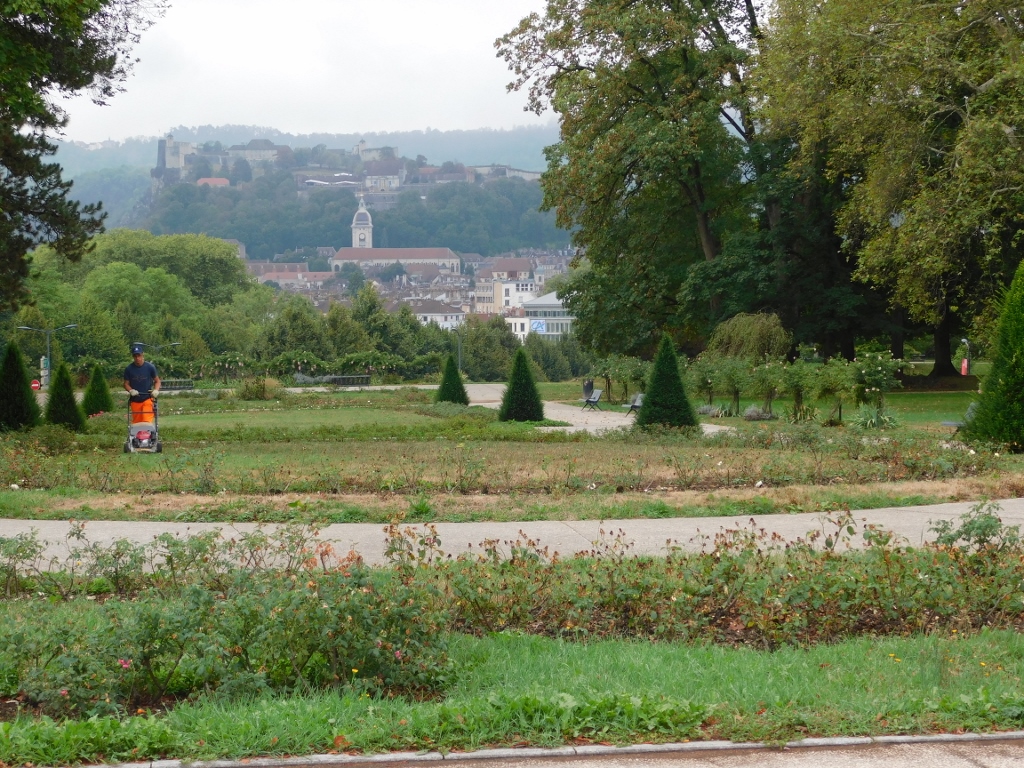 Besançon
Besançon
Besançon, which is the capital of the region of Franche-Comté, was built in an exceptionally interesting spot. The Doubs river makes a natural meander here in the shape of a horseshoe which in turn makes an almost complete circle with the diameter of around 1 km. On the south side, right where there is the link between the promontory and the rest of the “land” and where the river lacks less than 600 m to make the circle, there is a hill with the altitude of over 300 m. All of this is surrounded by several other hills that are up to 500 m high.
The flat area, encompassed by the meander, was inhabited already around 1500 BCE, while Julius Cesar conquered the places in 58 BCE. We could almost imagine that Asterix and Obelix were somewhere around at the time.
The exceptionally favourable strategic position of the city and the fact that it was located on an important trading route caused a rather turbulent history of the place and in the period from 1668 to 1672, the Spanish, who at the time ruled this area, started with the construction of a citadel right on that narrowest part of the protruding land surrounded by the meander. It was already them who used a design prepared by a famous military engineer, Vauban (1633-1707), and when Besançon again and finally (with a couple of brief interruptions) came into the hands of the French, in 1678, Vauban was hired again.
The result of the works that lasted until 1711 was impressive. Not only was the citadel itself perfected (it was first completed in 1683), but also ramparts that surrounded the city were also built. Even today, when you walk from the railway station towards the river and the historical centre of the city, you can see remains of the ramparts and the moats that were used for the defence. The tower seen in the photo below is but a modest segment of that defensive system.
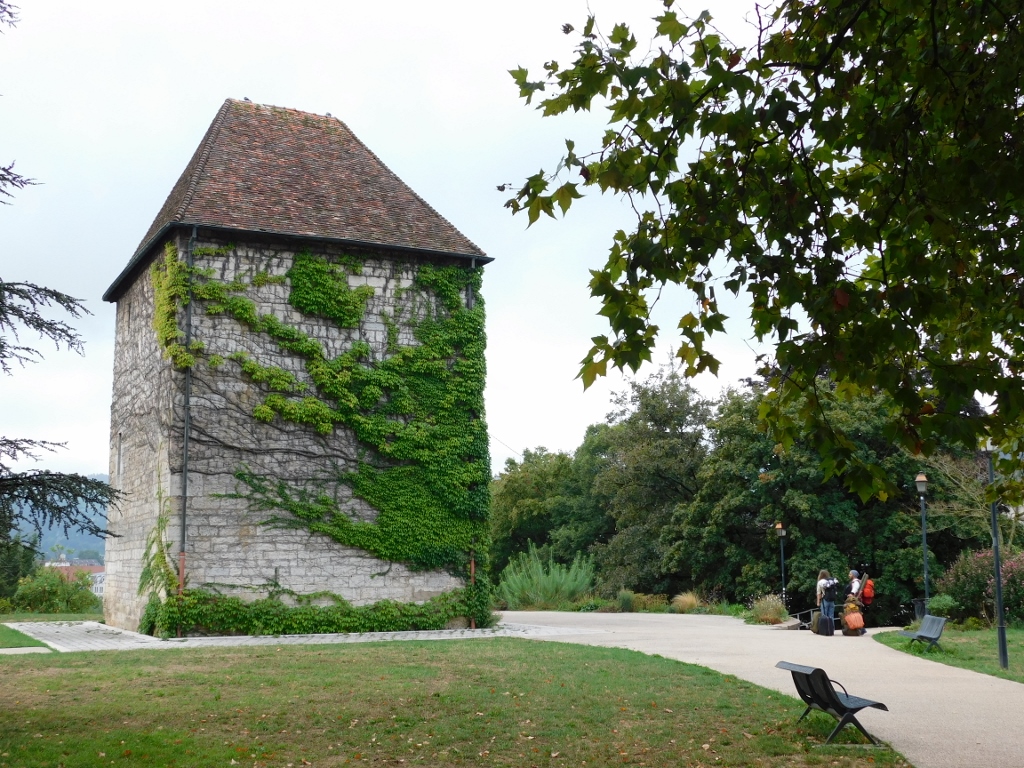 Montmart Tower
Montmart Tower
After taking the photo of the tower, I went down to the river and there I came across some pretty impressive sights.
 Besançon
Besançon
 Besançon
Besançon
The line of houses seen on the right-hand side of the photo above were built in the 17th century along Quai Vauban (Quay Vauban) which is nowadays a pedestrian path. Although the promenade was named after the famous military architect, it was actually quite another designer who was in charge of its construction. Some of these houses that have arcades on the ground floor are today historical monuments.
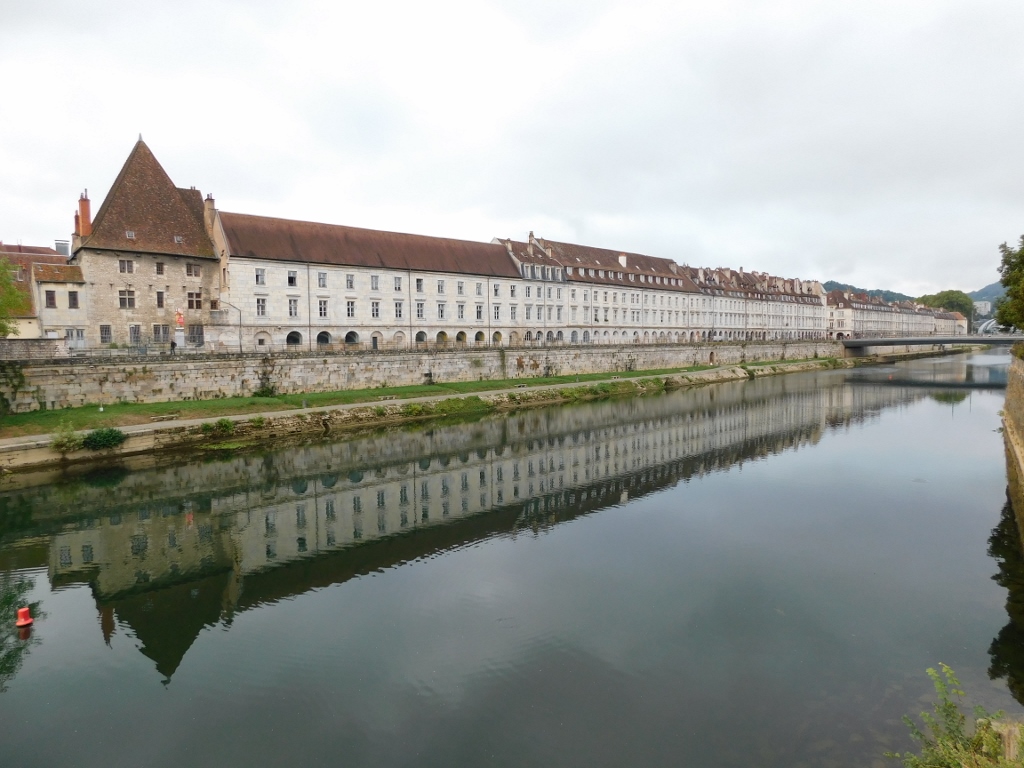 Quai Vauban alongside the Doubs river
Quai Vauban alongside the Doubs river
On the right bank of the Doubs, one also passes by Besançon Synagogue.
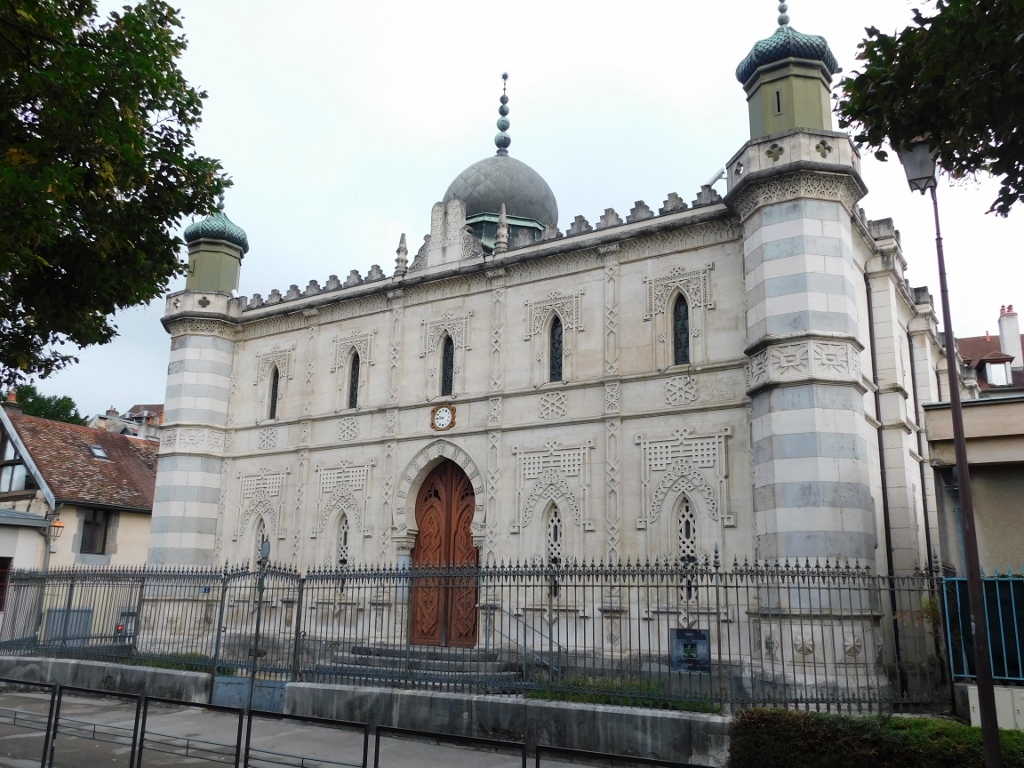 Besançon Synagogue
Besançon Synagogue
The construction of the synagogue in Besançon was completed in 1871 using a Neo-Moorish style, which makes the building stand out in the best possible way, while contributing to the architectural diversity.
Still, I must admit that I was primarily attracted by the sight on the other side of the river which I soon crossed using a bridge seen on the right-hand side of the photo below.
 Quai Vauban alongside the Doubs river
Quai Vauban alongside the Doubs river
After the bridge, you come across a spacious square, but if you continue straight, you get to a pedestrian street, Grand Rue, where I soon took a seat in order to have light breakfast.
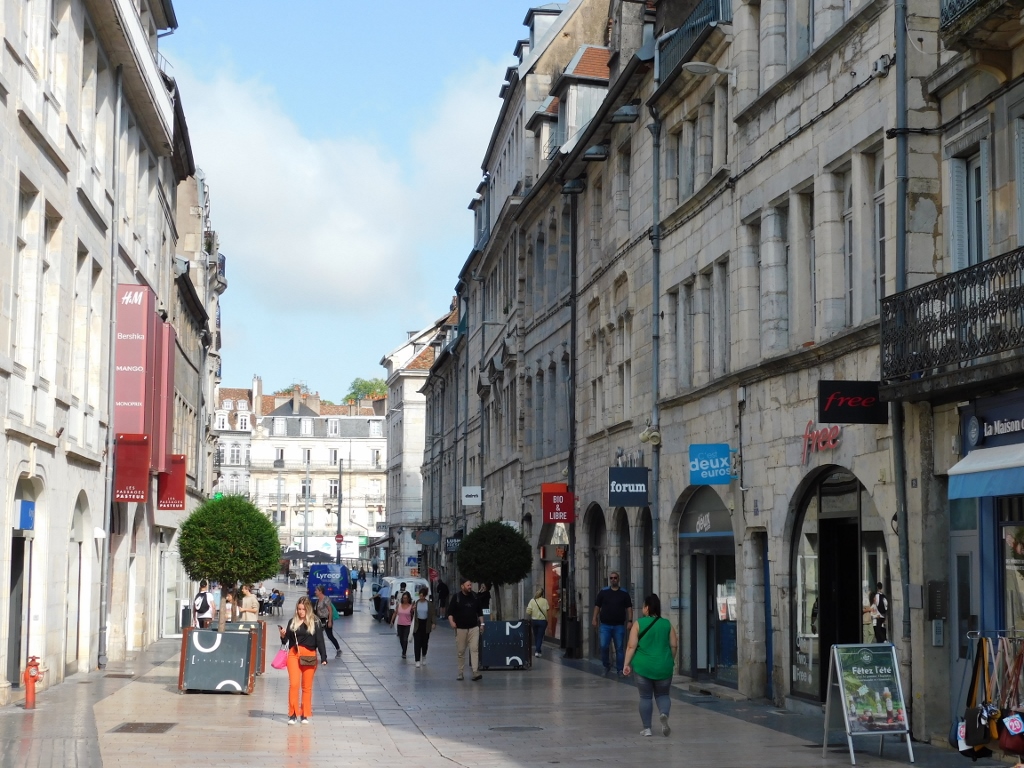 Grand Rue
Grand Rue
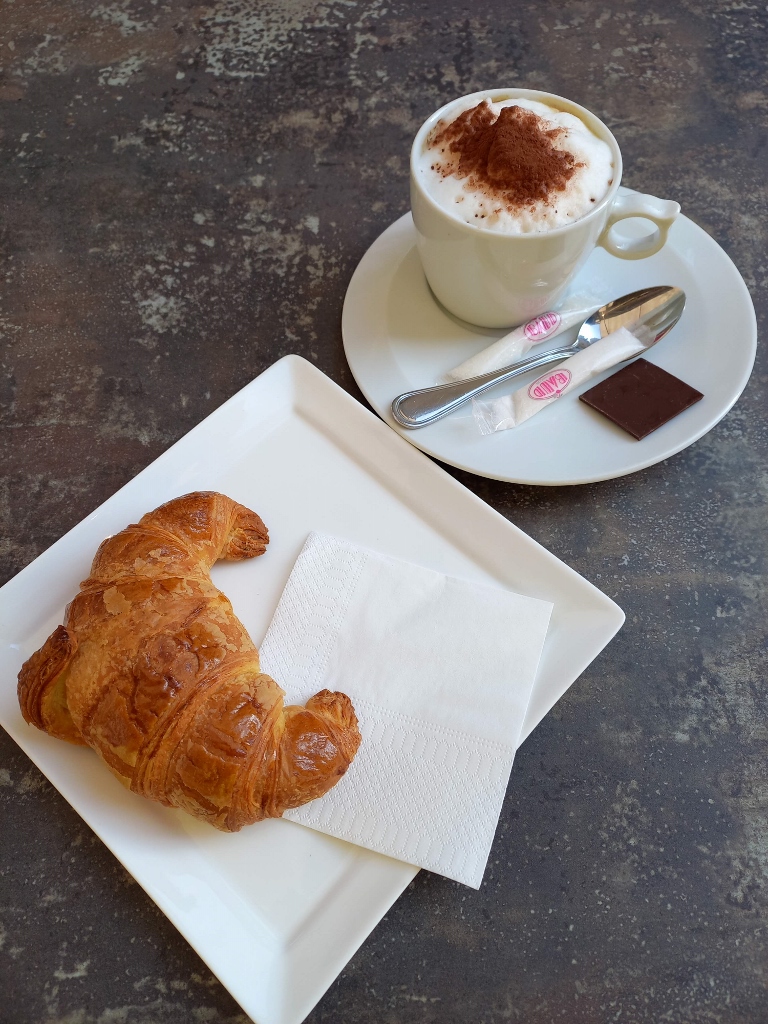 Breakfast on Grand Rue
Breakfast on Grand Rue
In order to get to the citadel in Besançon one just needs to go straight along this street. In addition, some other interesting sites that need to be seen here are located along this street in fact. This does not mean that one should not walk around the historical centre. Namely, it is said that Besançon has one of the most beautiful historical centres in France and it is certainly renowned as the greenest city in the country (the reference is to the colour of the vegetation).
So, I first reached the City Hall (Hôtel de ville). The first city hall in this spot was built in 1393. That building was expanded and modified at the end of the 16th century. Until the French Revolution, the statue of King Charles V was displayed in the niche seen by the entrance into the building, but it was, of course, removed.
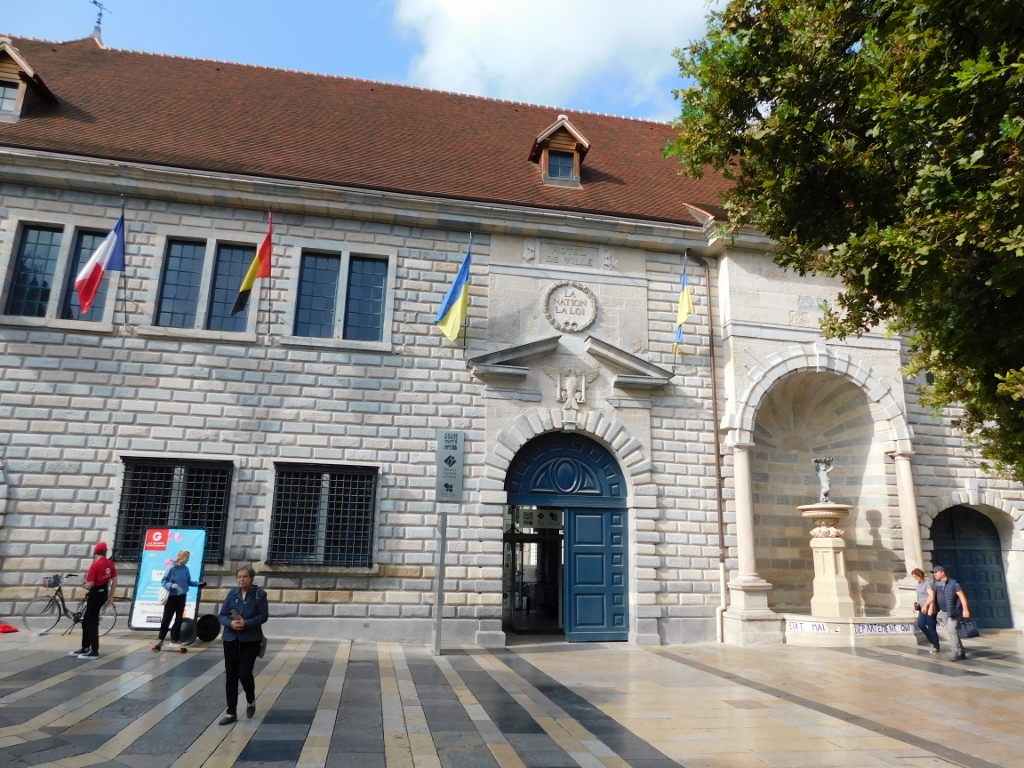 City Hall
City Hall
Right across the City Hall, in the square called Place du 8 Septembre, there is the Church of St. Peter (Église Saint-Pierre).
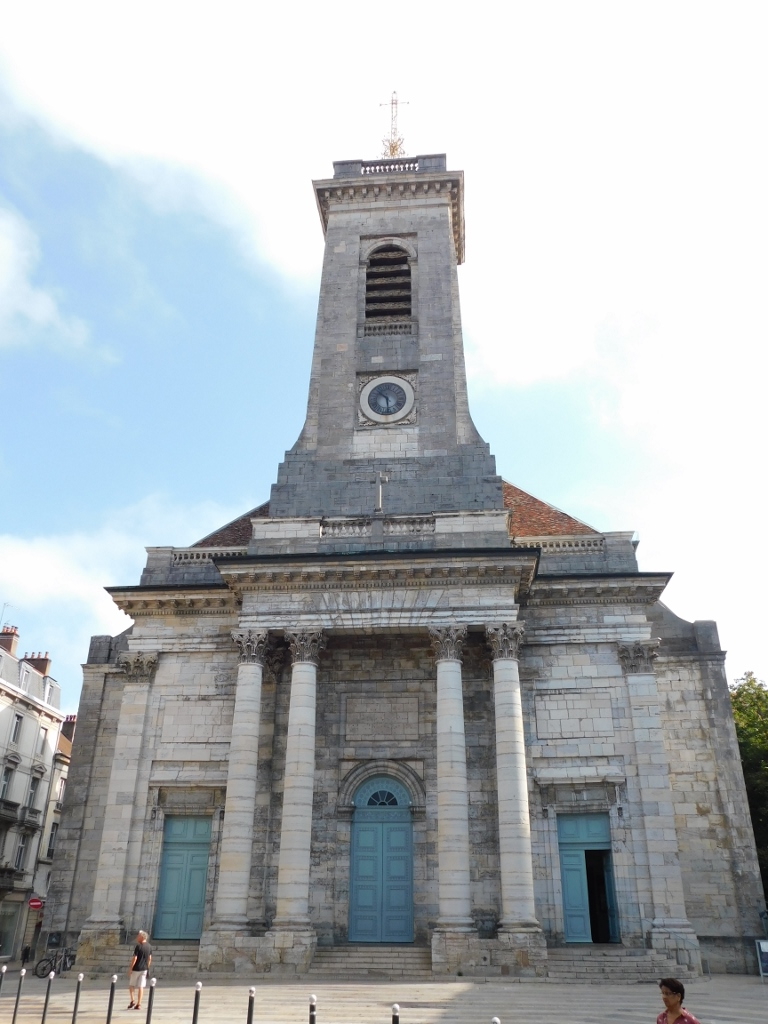 Church of St. Peter in Besançon
Church of St. Peter in Besançon
The church was built from 1782 to 1786 and the height of the church, or rather of its tower that used to serve as the city belfry, is pointed out in particular.
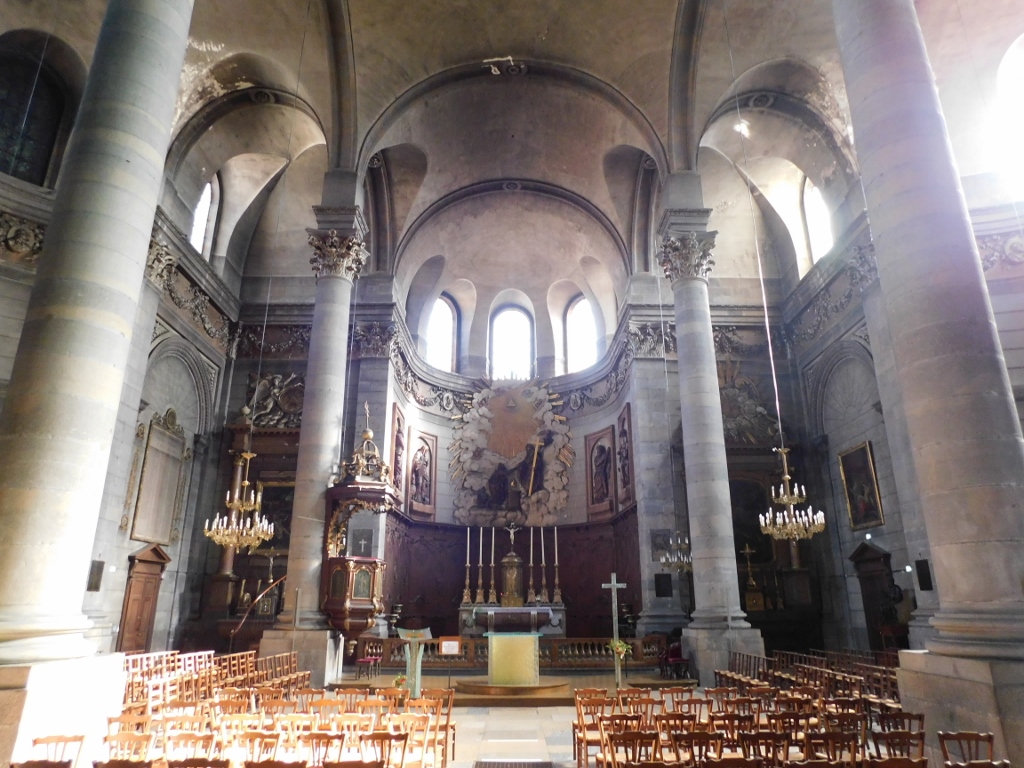 Church of St. Peter in Besançon, a detail
Church of St. Peter in Besançon, a detail
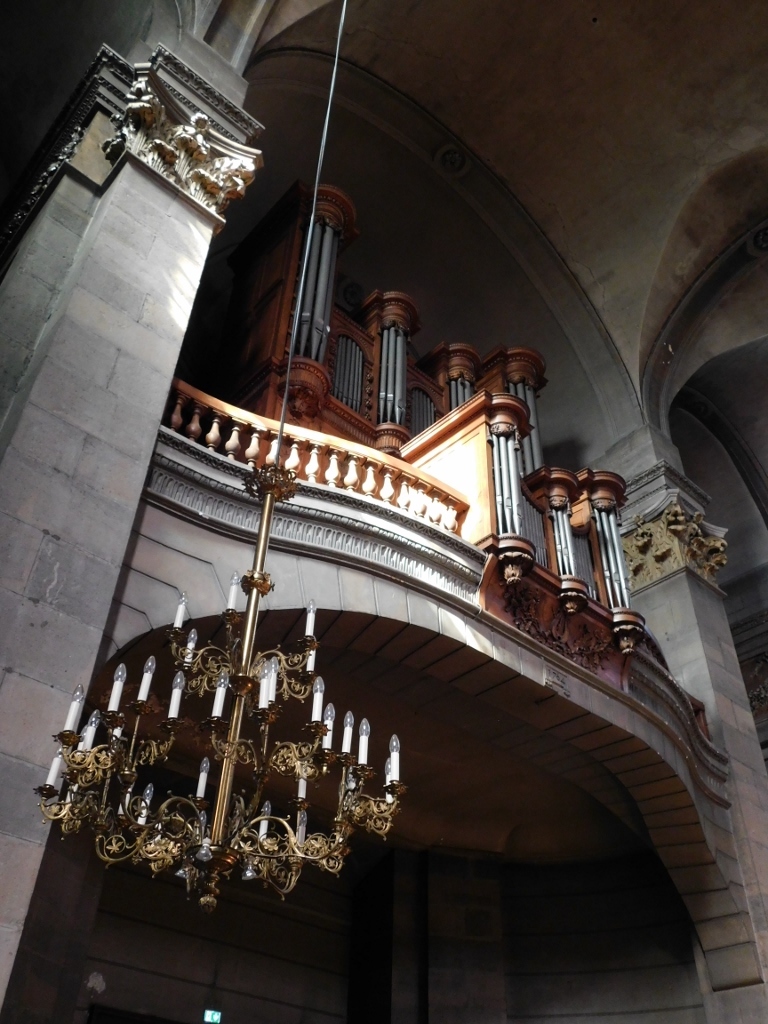 Church of St. Peter in Besançon, a detail
Church of St. Peter in Besançon, a detail
I did not deal much with the belfry and its height, but I was attracted by another element that is also located high up. These are the chimneys that can be seen on the roofs of the houses in the centre of Besançon.
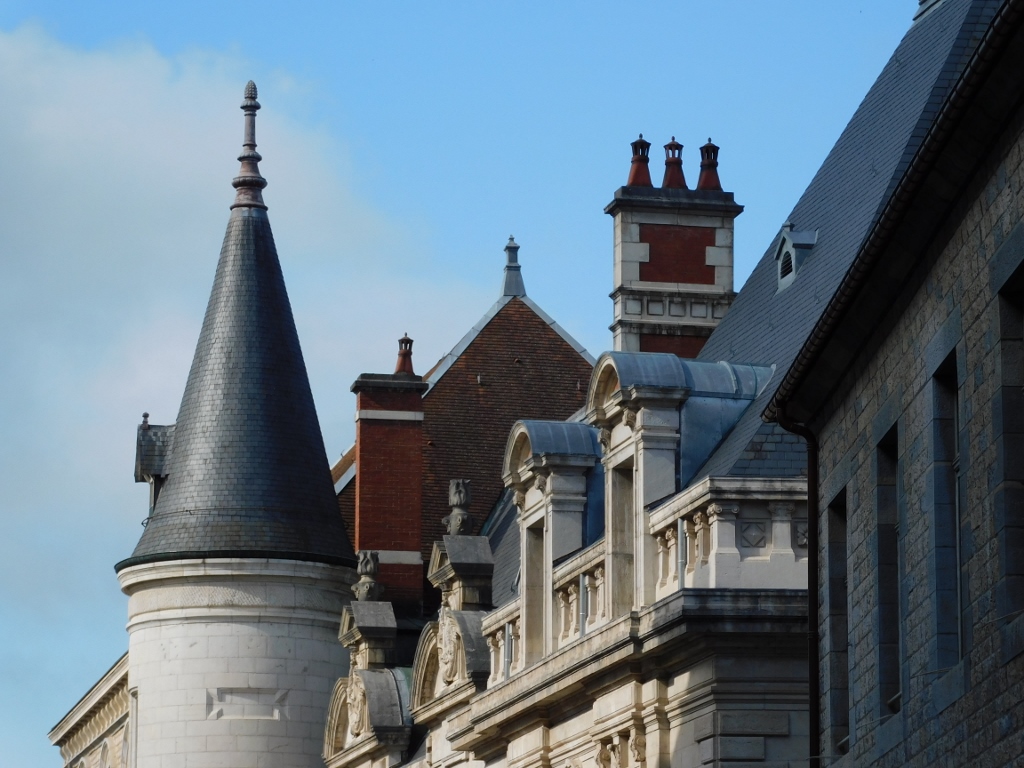 The chimneys of Besançon
The chimneys of Besançon
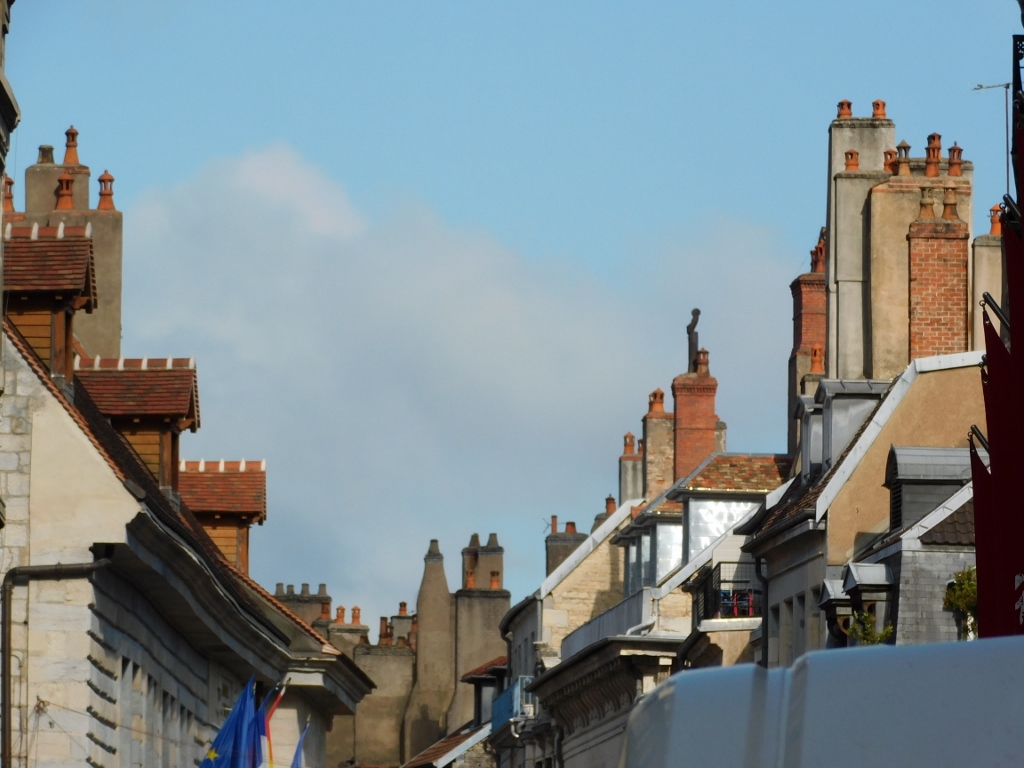 The chimneys of Besançon
The chimneys of Besançon
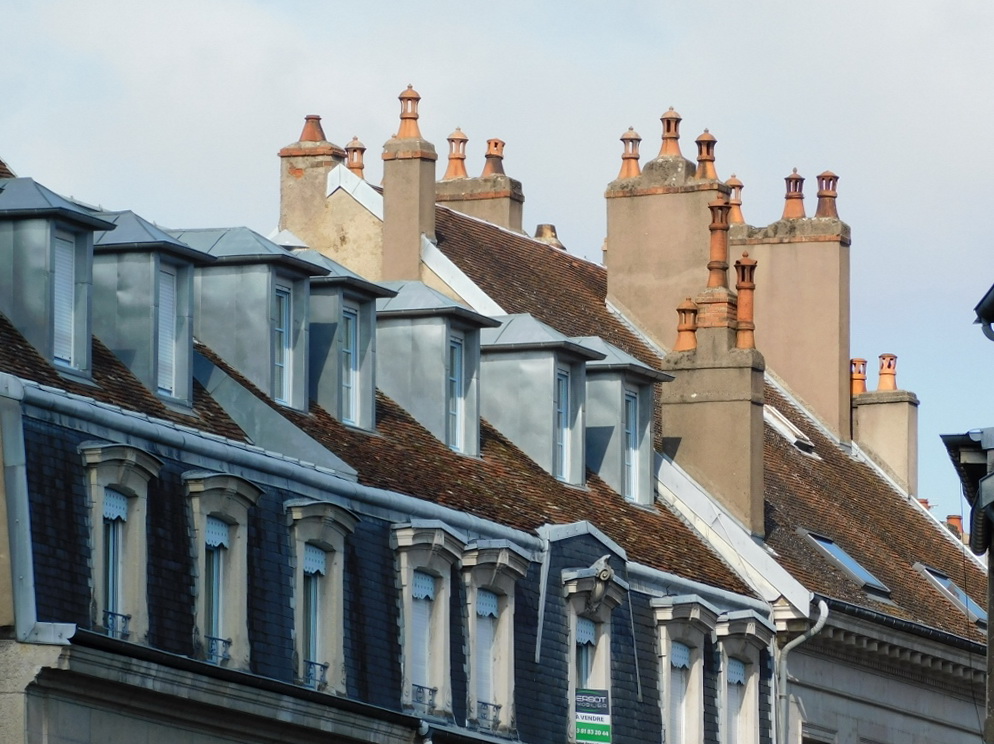 The chimneys of Besançon
The chimneys of Besançon
I found these chimneys, as well as the mansards, most interesting, but not only them. The buildings in Besançon are strikingly different from those that I was seeing around Alsace where it was mostly the half-timbre construction used for the building of old houses. This is no wonder for I was in a different region that was obviously ruled by the stone and the brick, rather than by the timber and infill made, for instance, of wattle and daub.
While walking on along Grand Rue that was, from the city hall onwards, also used by vehicles, I could see a little farther away the roof of Granvelle Palace (Palais Granvelle).
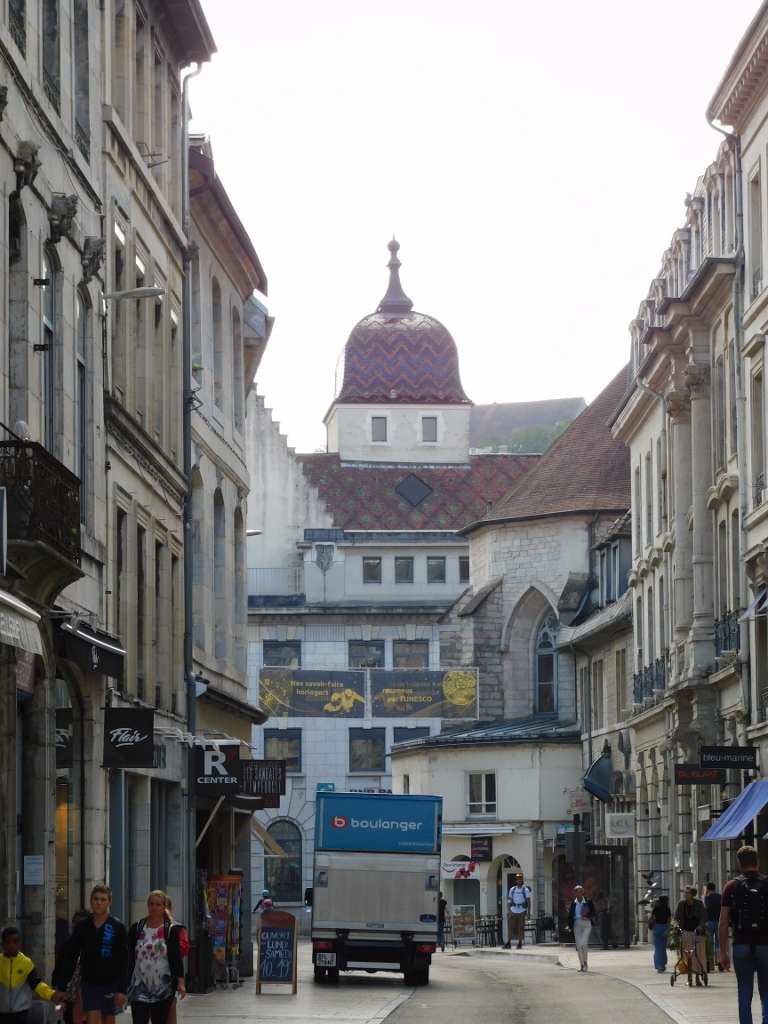 Grand Rue and the picturesque roof of Granvelle Palace
Grand Rue and the picturesque roof of Granvelle Palace
The palace was built from 1534-1547 by exceptionally wealthy Nicolas Perrenot Granvelle who was very close to King Charles V. Later, the ownership of the palace moved from one person to another, depending on the historical events, but in 1864 it was bought by the city. It was restored in 2002 and since then it has housed the Time Museum (Musée du Temps). Namely, historically speaking, Besançon is the capital of France as far as the production of watches and clocks is concerned.
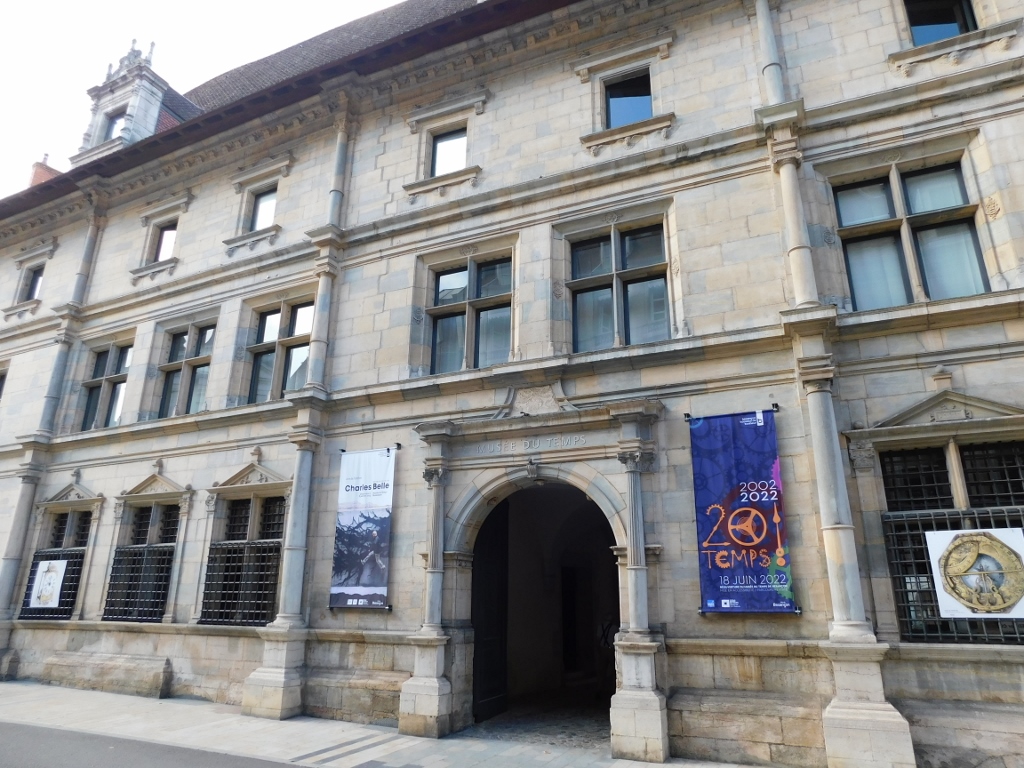 Granvelle Palace
Granvelle Palace
I was not particularly interested either in the museum or the watches and clocks, but I did want to look at some parts of the palace that can be seen from the outside, as well as at the courtyard.
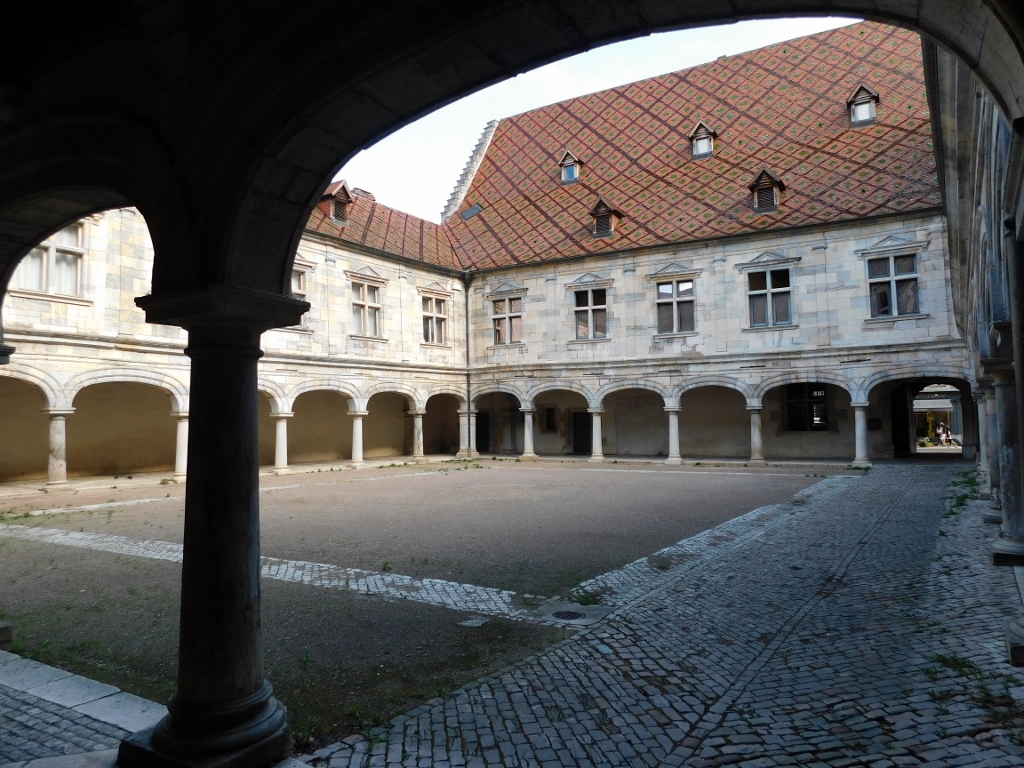 Granvelle Palace
Granvelle Palace
The palace was built in the Italian Renaissance style and back in the day the Granvelle family not only had this opulent palace built, but they also gathered an exceptionally rich collection of paintings, books and antiquities. The collection got dispersed over time, but some of its parts moved to the hands of the municipal library and the Museum of Fine Arts and Archaeology in Besançon. By the way, this museum is the oldest public museum in France, being founded in 1694, which is almost 100 years before the Louvre became a public museum. I found this piece of information interesting, but it did not make me want to go to the museum that is located closed to Quai Vauban.
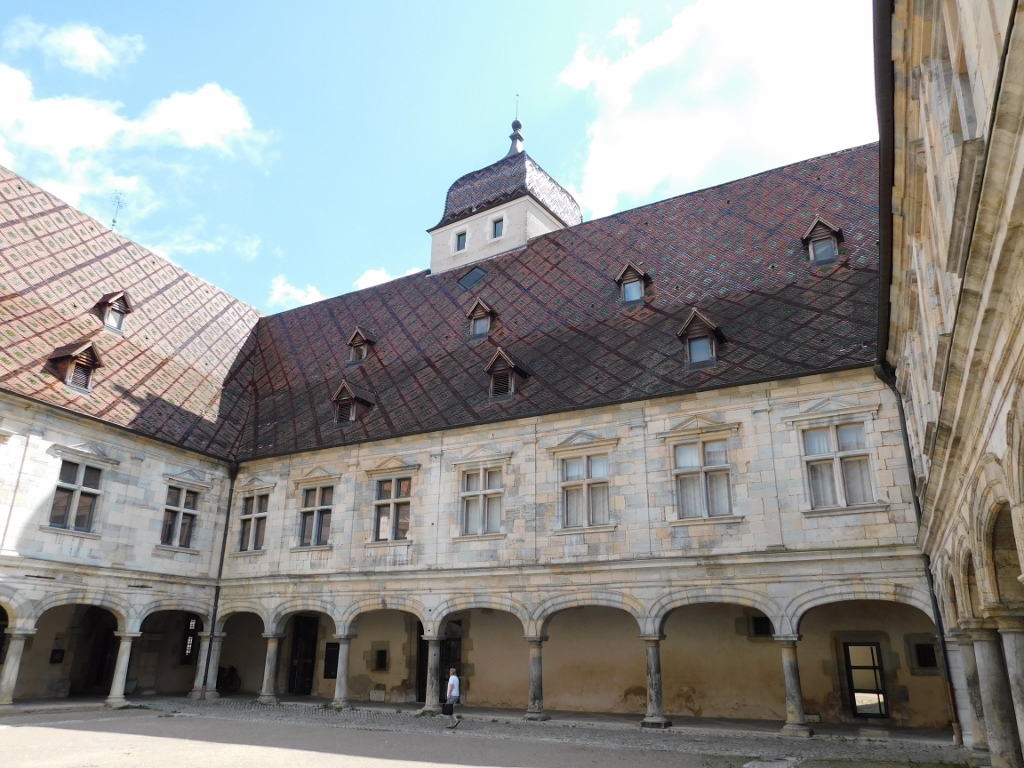 Granvelle Palace
Granvelle Palace
Instead, I looked a little behind Granvelle Palace where there is a park instead of the former auxiliary buildings, gardens and orchards that came along with the palace.
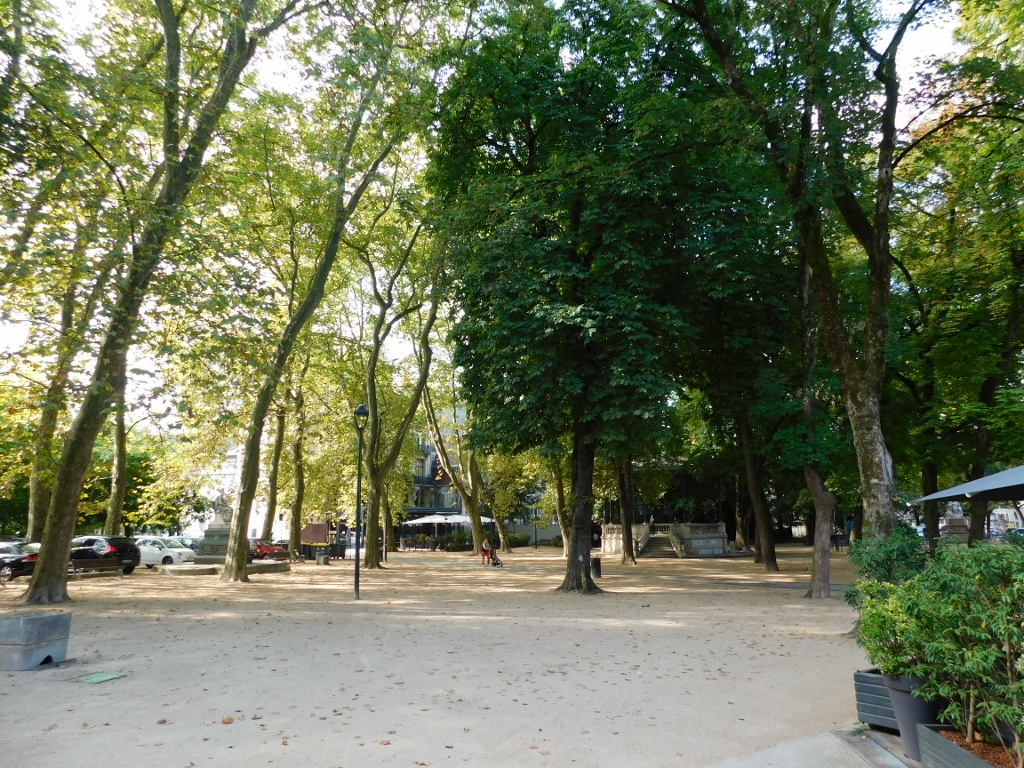 Park behind Granvelle Palace
Park behind Granvelle Palace
And then I simply continued with my stroll along Grand Rue.
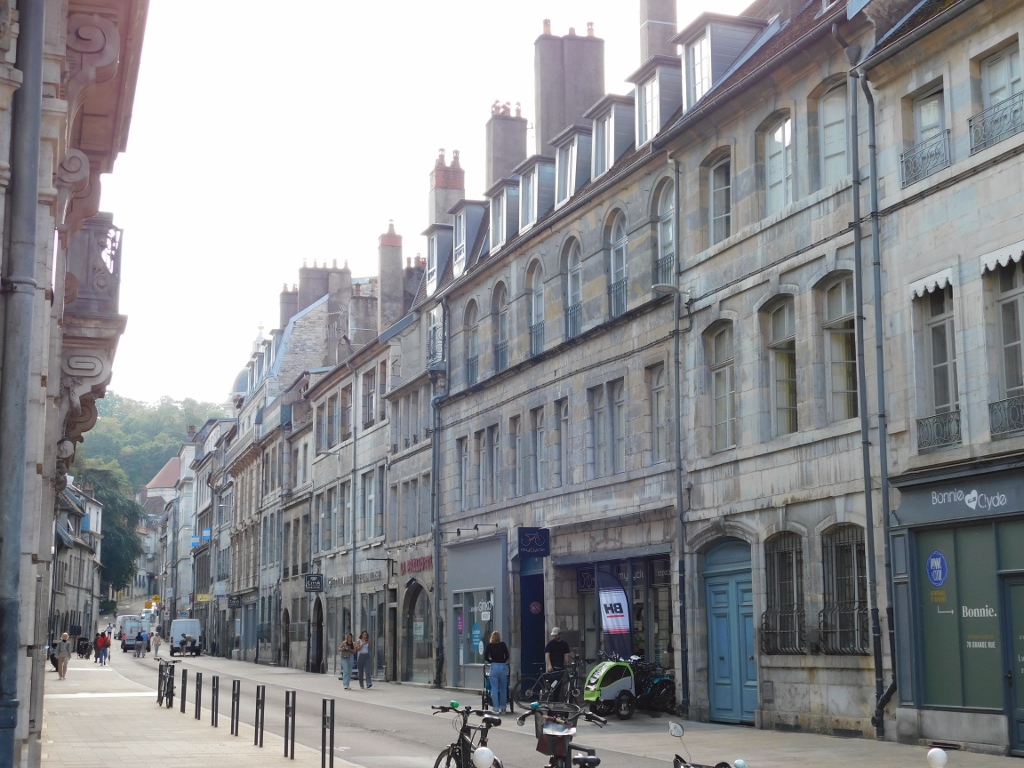 Besançon
Besançon
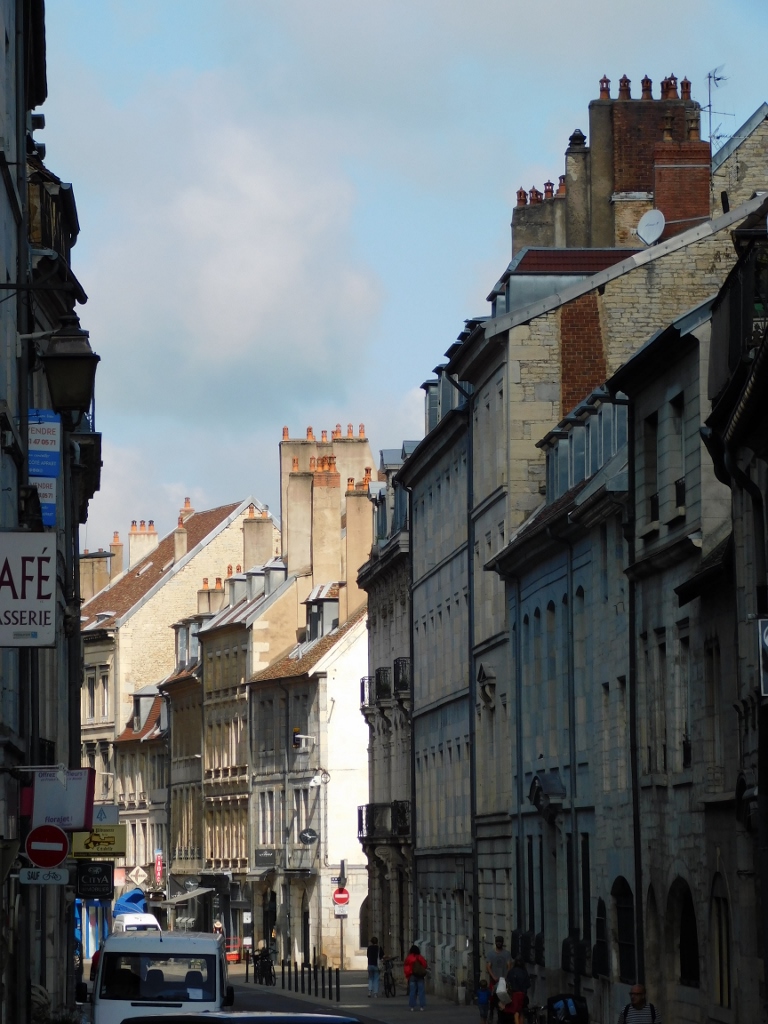 Besançon
Besançon
Except for the famous military fortification, Besançon is also known as the birthplace of Victor Hugo (1802–1885) and in the centre of the city there is a house in which this famous French author was born. But, I don’t think one should pay too much attention to this piece of fact, since the father of Victor Hugo was a military person who kept moving around with his family and so the children were born wherever the mother happened to be at the given moment.
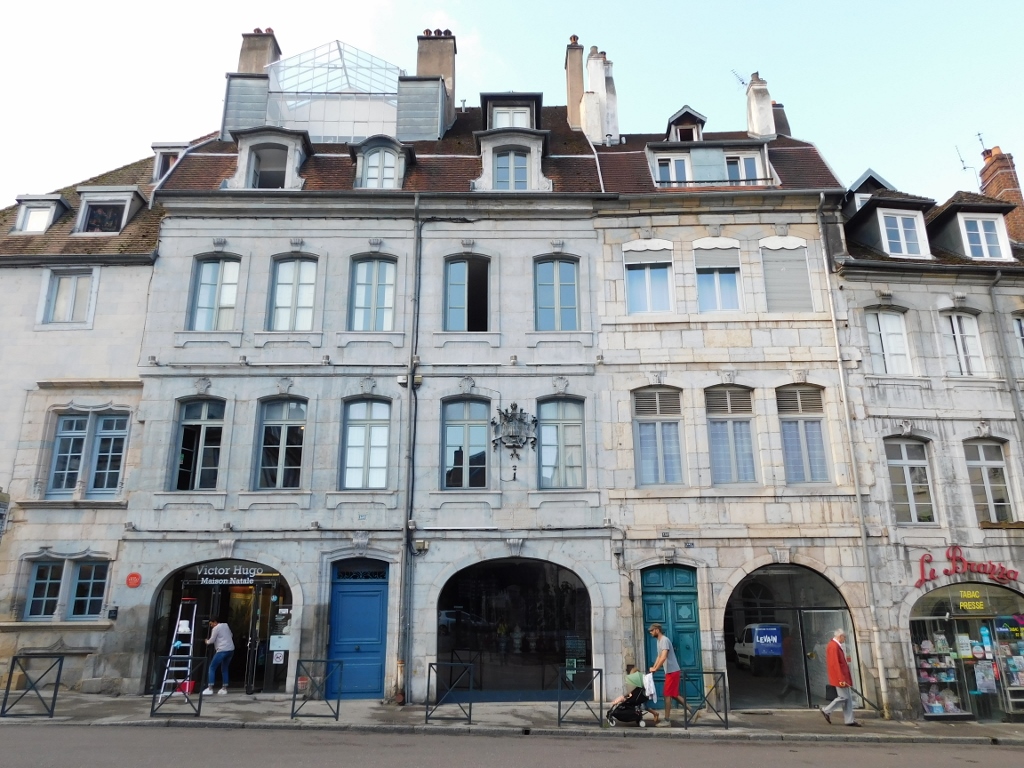 Victor Hugo’s birth house
Victor Hugo’s birth house
When you continue further towards the hill with the citadel, you come across Square Castan, a park-like area, but in fact a site with archaeological remains of an ancient town, most likely from the 2nd or the 3rd century CE.
Until 1797, there used to be a church here, but it was demolished after the Revolution. Archaeological research started in the second half of the 19th century and it revealed the ruins that can be seen here today.
 Square Castan
Square Castan
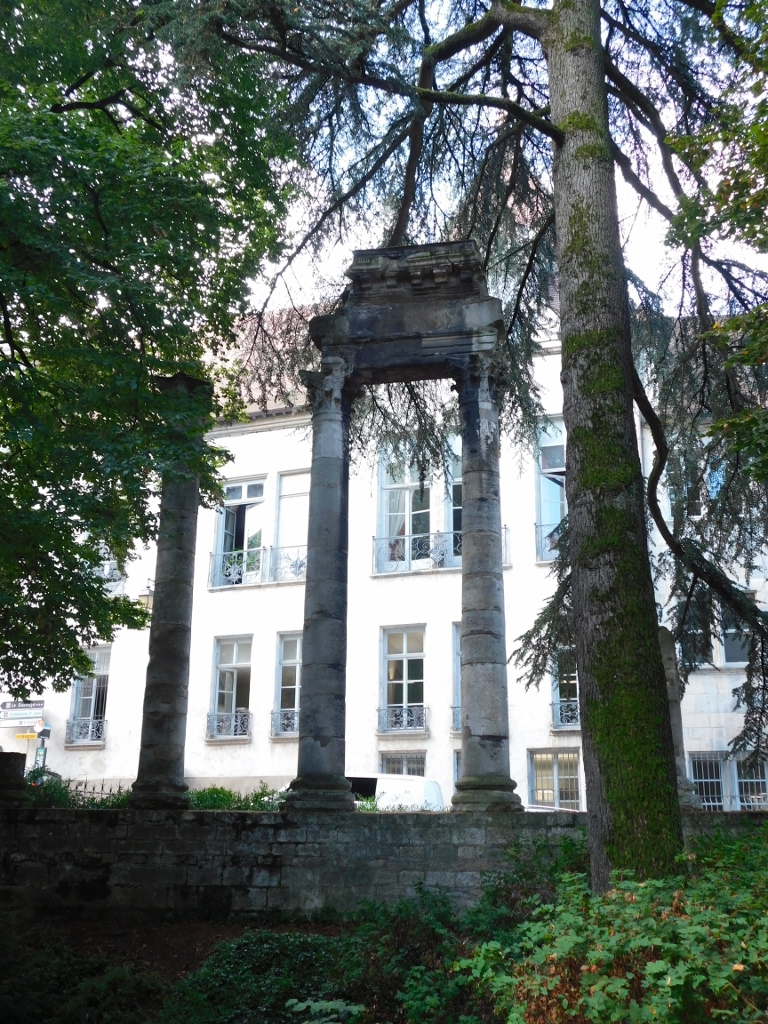 Square Castan, a detail
Square Castan, a detail
Only a few dozen metres after the park you can see two important structures – the Black Gate (Porte Noir) and St. John’s Cathedral (Cathédrale Saint-Jean).
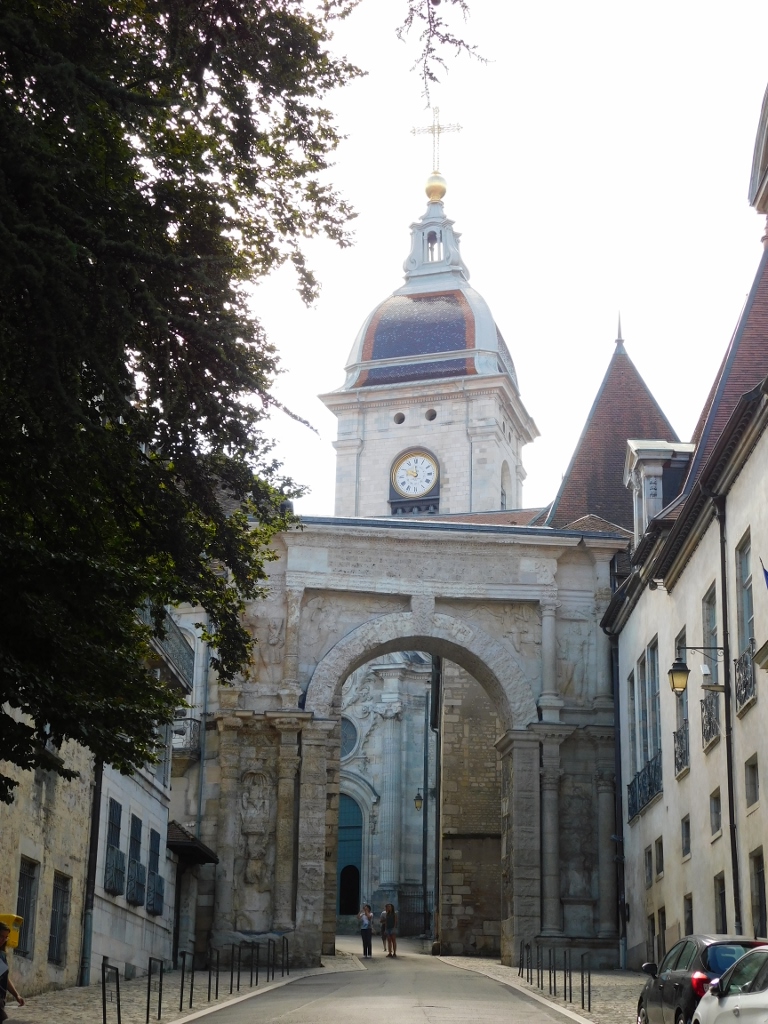 Porte Noir and St. John’s Cathedral
Porte Noir and St. John’s Cathedral
As for the Black Gate, this is a triumphal arch that was built back in the day on the south side of the cardo, which was the name during the Roman times for the main street running in the north-south direction. The gate was built in the second half of the 2nd century during the reign of Emperor Marcus Aurelius, but there is no clear dedication, so the researchers can only provide their suppositions.
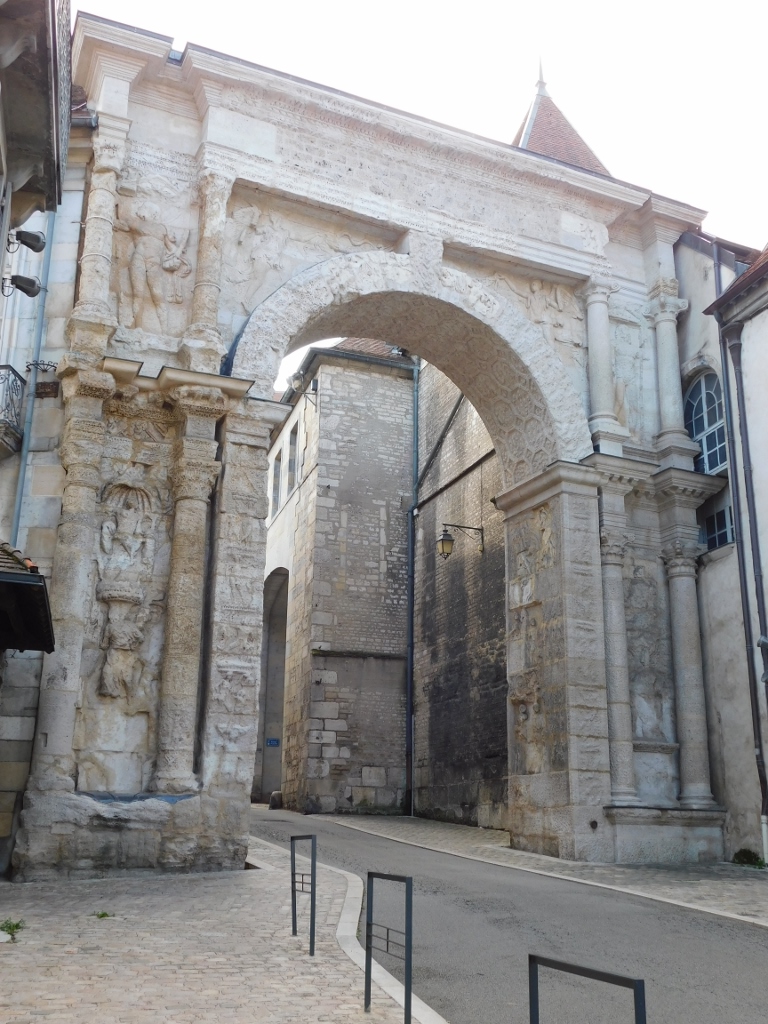 Porte Noir
Porte Noir
After I had passed through the gate, I reached St. John’s Cathedral. The street leading to the church is narrow and it also turns, while going uphill, which all made it a little difficult to take a fine frontal photo.
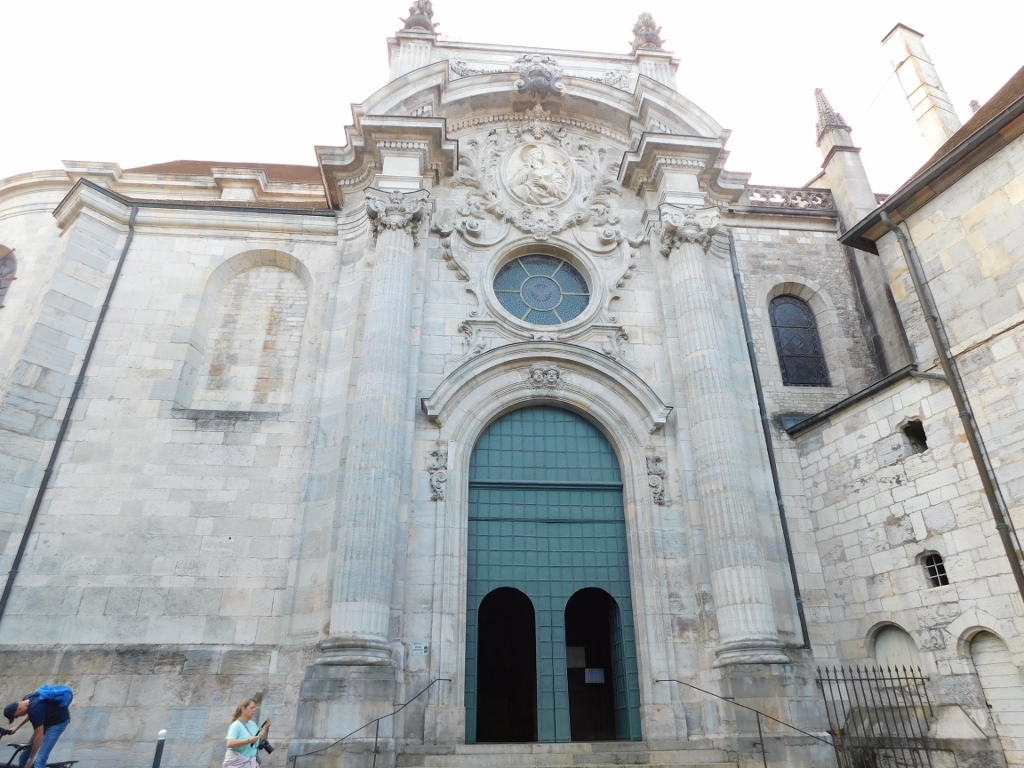 St. John’s Cathedral
St. John’s Cathedral
Although the construction of the cathedral practically took centuries, most of it was built in the 12th century.
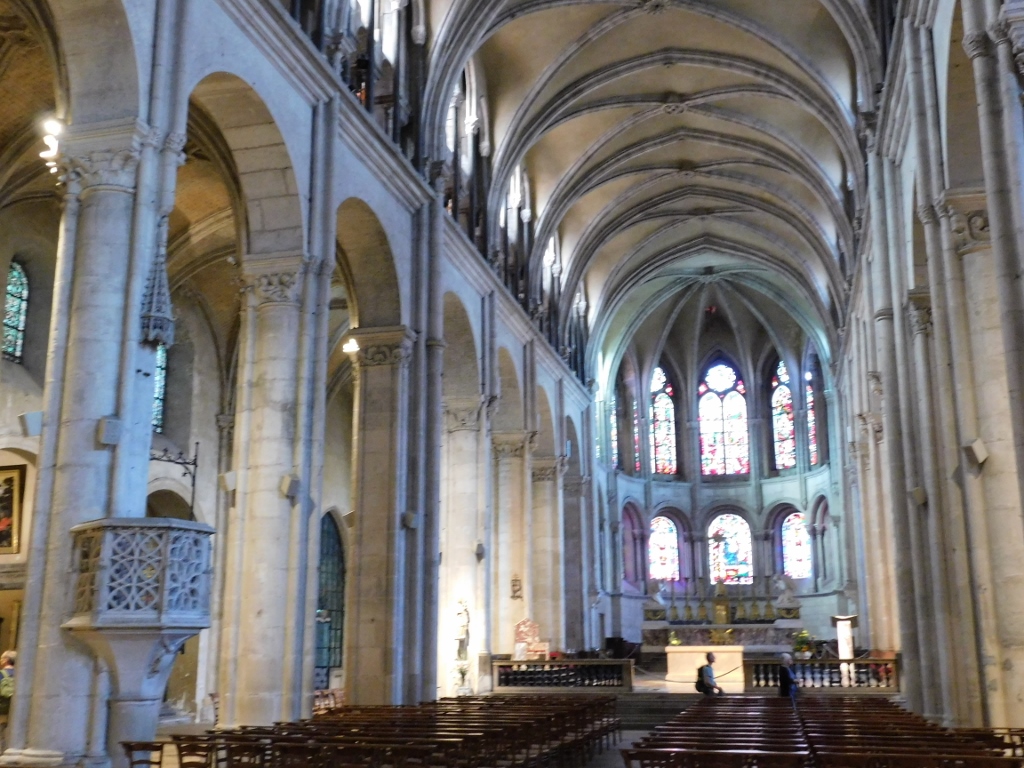 St. John’s Cathedral
St. John’s Cathedral
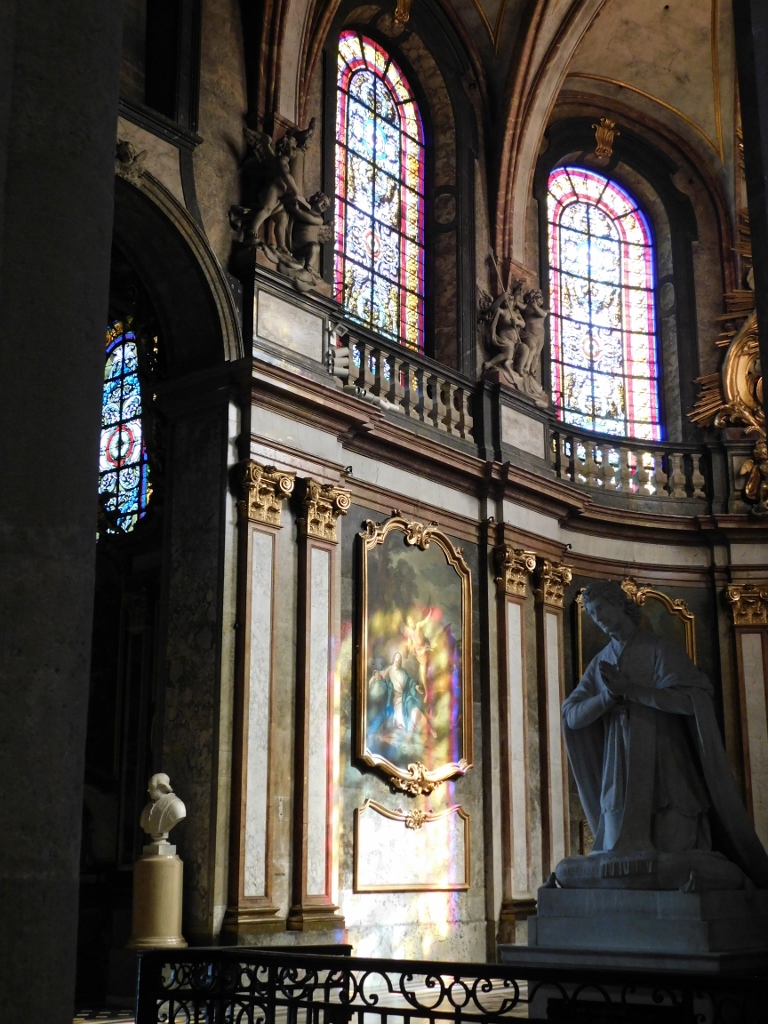 St. John’s Cathedral, a detail
St. John’s Cathedral, a detail
Within the cathedral or more accurately in the tower that serves as the clock-tower, there is an astronomical clock that this cathedral is famous for. The clock was made in 1860 and it consists of 30.000 mechanical parts, 57 dials and 122 mutually connected and interdependent indicators. Not only the Cathedral, but also the clock within it, are inscribed in the list of historic monuments of France. The clock can be seen without any problems at certain times of the day and the year, plus there is a possibility of joining a guided tour where different functions are explained. I only had a look at it. It’s not as if I know anything about or have keen interest in clocks.
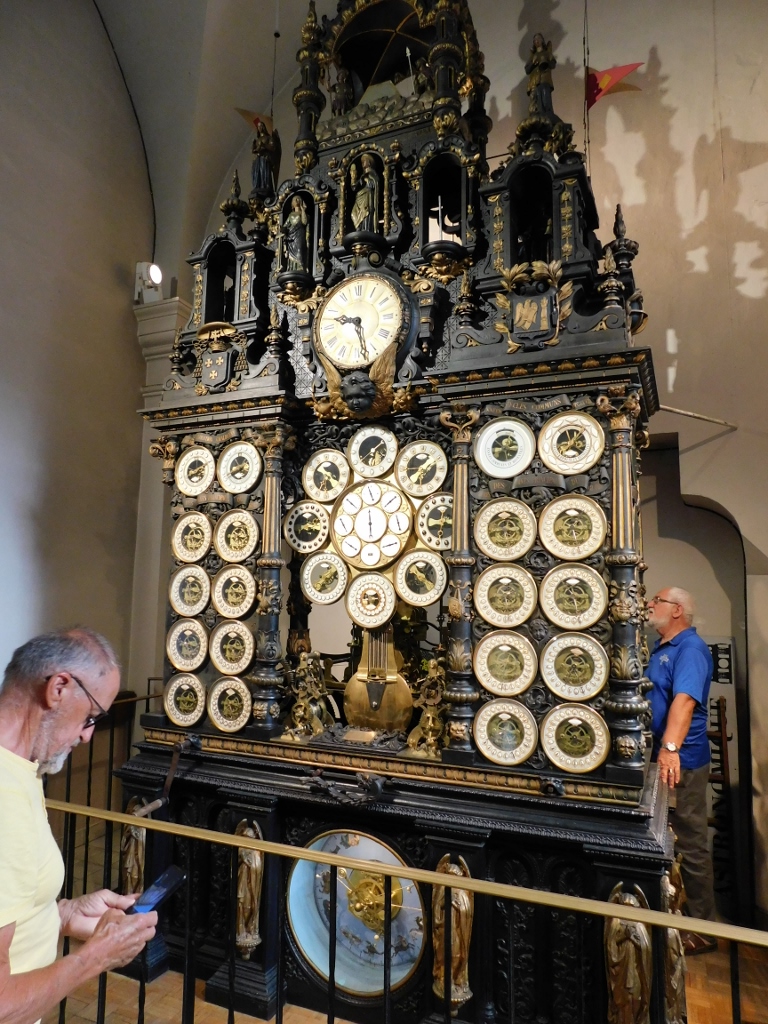 St. John’s Cathedral, the astronomical clock
St. John’s Cathedral, the astronomical clock
While moving on, I could see the Cathedral and some of its parts from other angles as well.
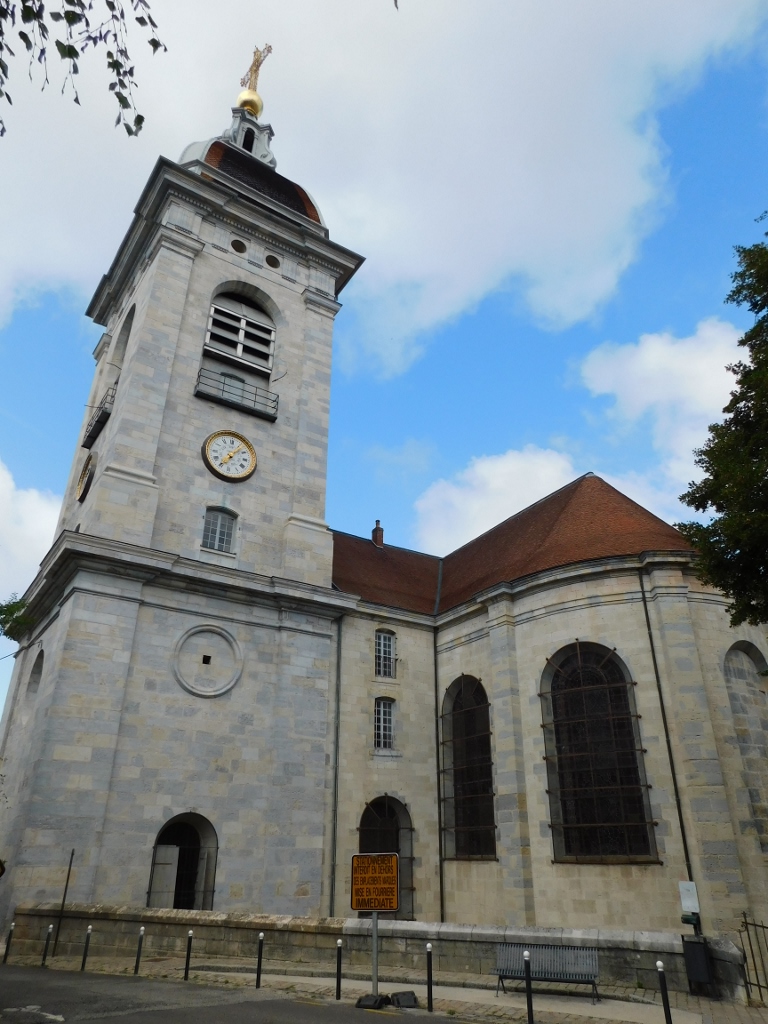 St. John’s Cathedral
St. John’s Cathedral
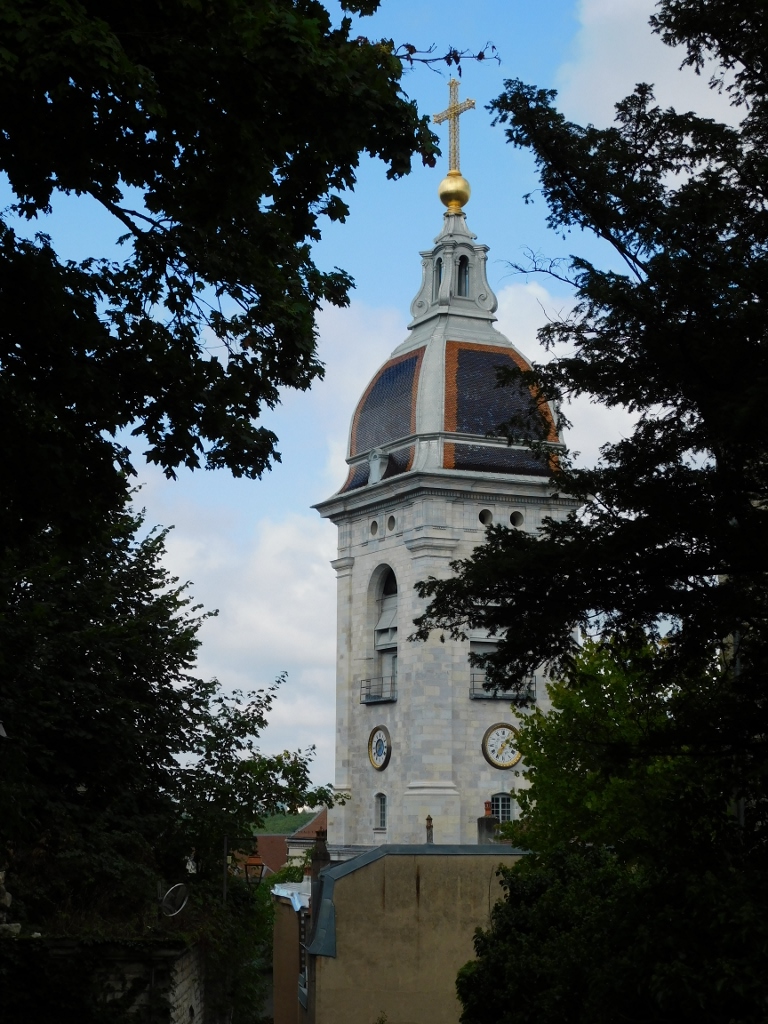 St. John’s Cathedral
St. John’s Cathedral
The Cathedral is situated on a slope from which starts the hill topped by the citadel. That meant that I had to climb and this would not be problematic by itself, since the height is not too big, but there was incredible air humidity and that really bothered me. That’s why I kept making breaks that I used in order to look around me.
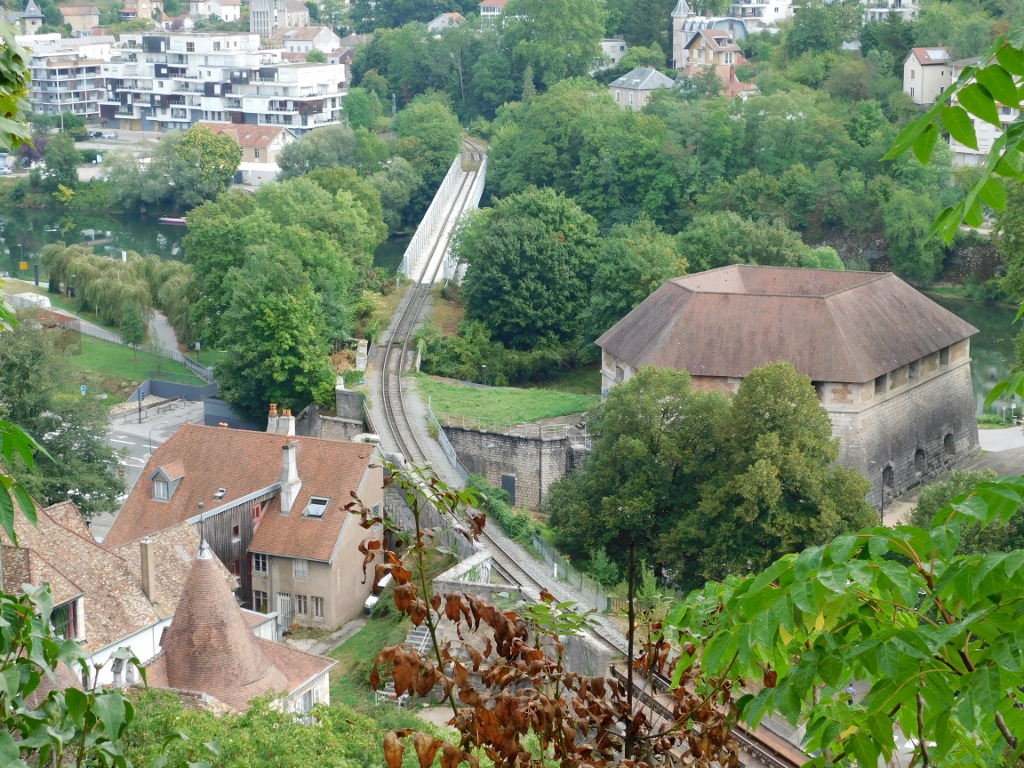 View from Saint-Étienne Hill (Mont Saint-Étienne)
View from Saint-Étienne Hill (Mont Saint-Étienne)
 View from Saint-Étienne Hill
View from Saint-Étienne Hill
Soon I finally reached the Fortifications of Vauban or Besançon Citadel. Together with another 11 sites that were fortified in line with Vauban’s designs, it has been inscribed in the UNESCO’s World Heritage List. I did not deal with the other fortifications, but the one in Besançon is considered the masterpiece of this military architect.
I have already talked a little about the citadel at the beginning of this sequel of my travel stories, but here I can add that in the meantime it was used as military barracks, a cadets’ training camp, as well as a prison. In 1959, the citadel was bought by the city of Besançon.
Today, it is a tourist site that includes several museums, either historic or scientific, while there is also a small zoo within the fortress.
Although I stopped by some information boards and read them, I must admit that my ambition here was linked only to a simple walk around the area. Nothing more than that. Going into details about military architecture does not attract me at all. But, that does not mean that I did not enjoy my stroll around the fortress. It sufficed quite enough just to look at the nice sights that were actually rather diverse.
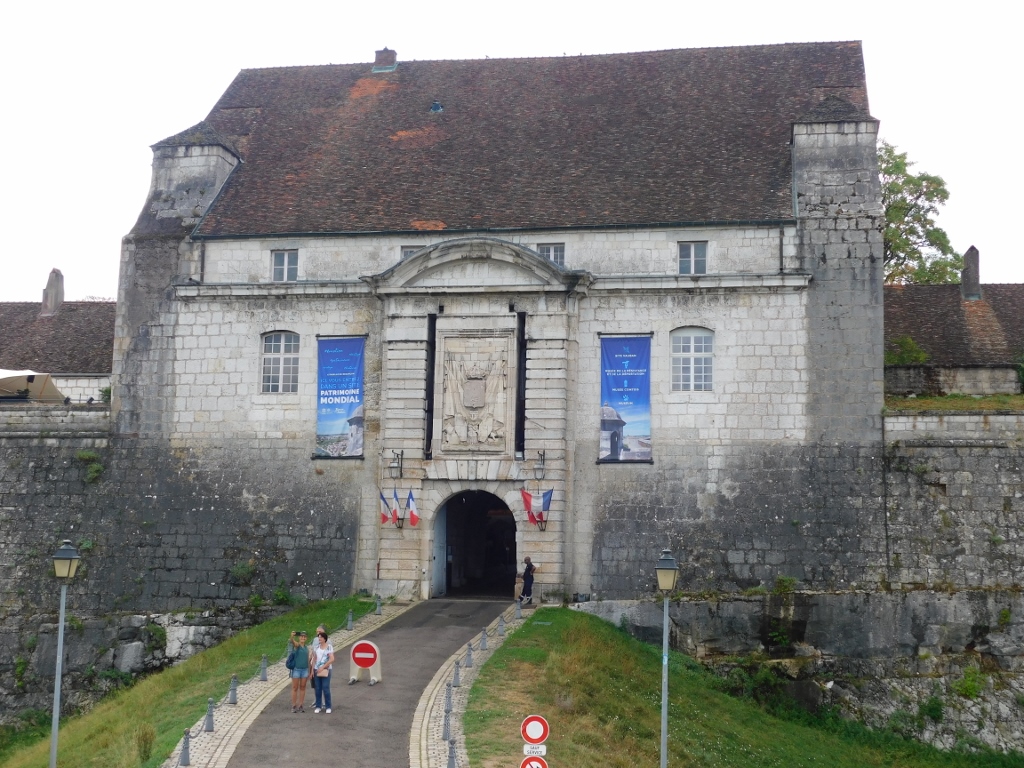 Vauban’s Citadel
Vauban’s Citadel
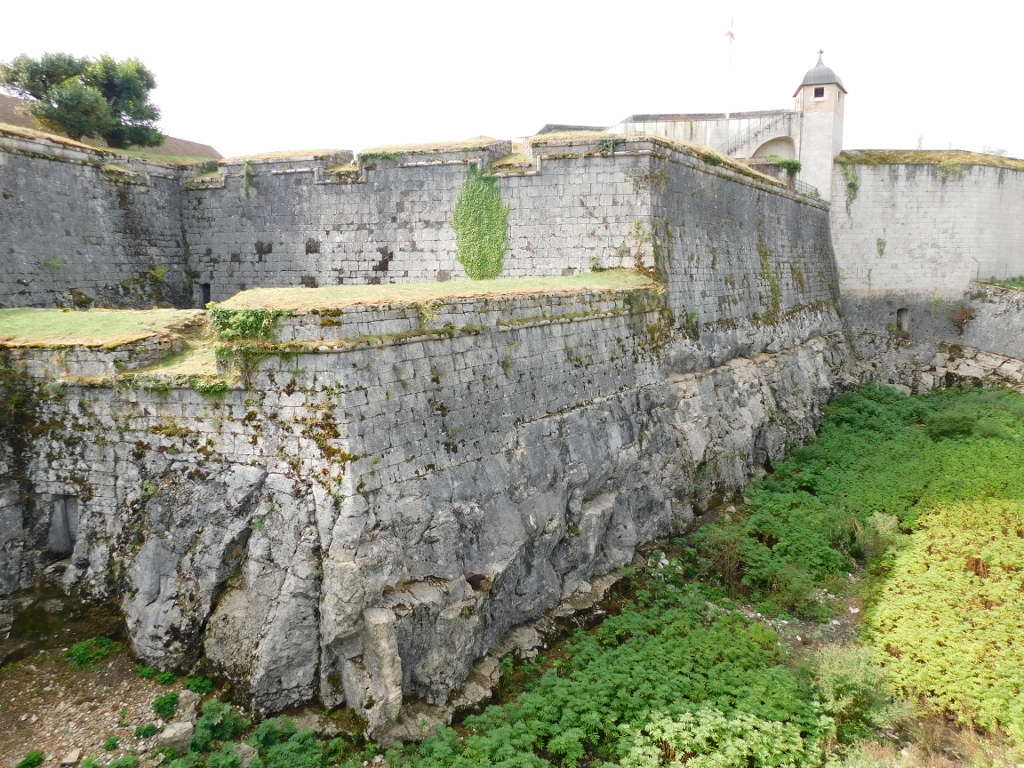 Vauban’s Citadel
Vauban’s Citadel
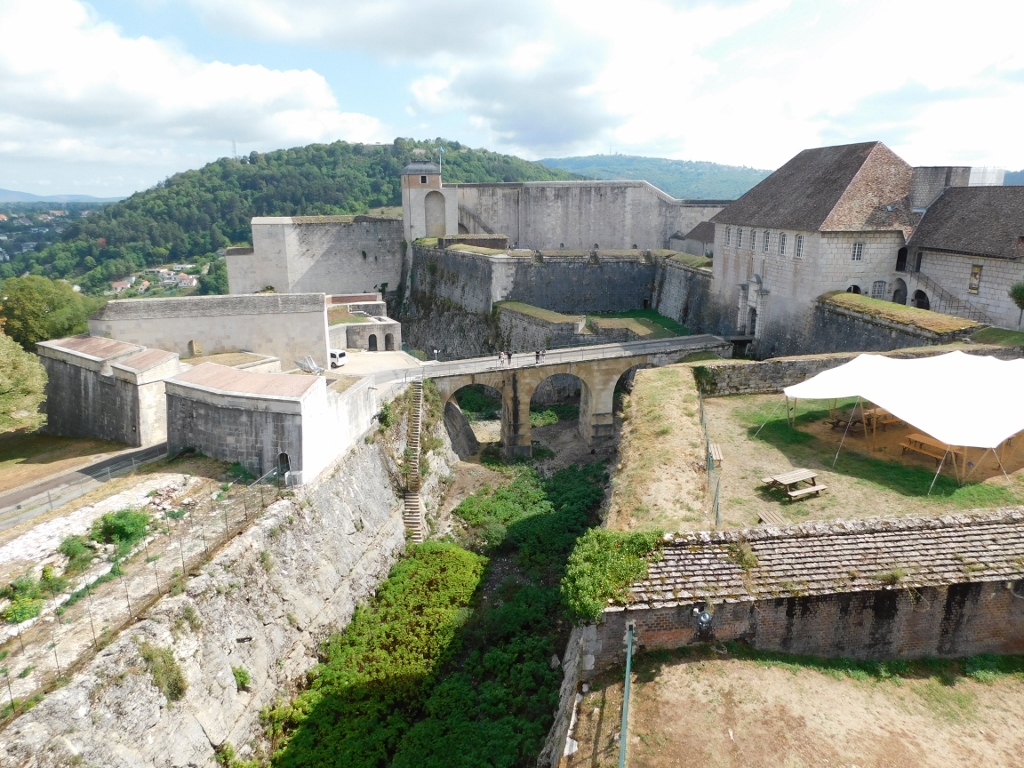 Vauban’s Citadel
Vauban’s Citadel
When I climbed the ramparts and went along the wall walks, I looked not only at the fortress itself, but also the surroundings. And they were occasionally incredibly impressive, such as the landscape where the Doubs leaves the meander that goes around the historical centre of Besançon and creates another meander.
 Surroundings of Vauban’s Citadel
Surroundings of Vauban’s Citadel
 Surroundings of Vauban’s Citadel
Surroundings of Vauban’s Citadel
 Surroundings of Vauban’s Citadel
Surroundings of Vauban’s Citadel
I have already mentioned the museums and they include the natural history one with aquarium, as well as a zoo. Some of their parts can also be seen from the ramparts, since these are simply areas with changed purposes.
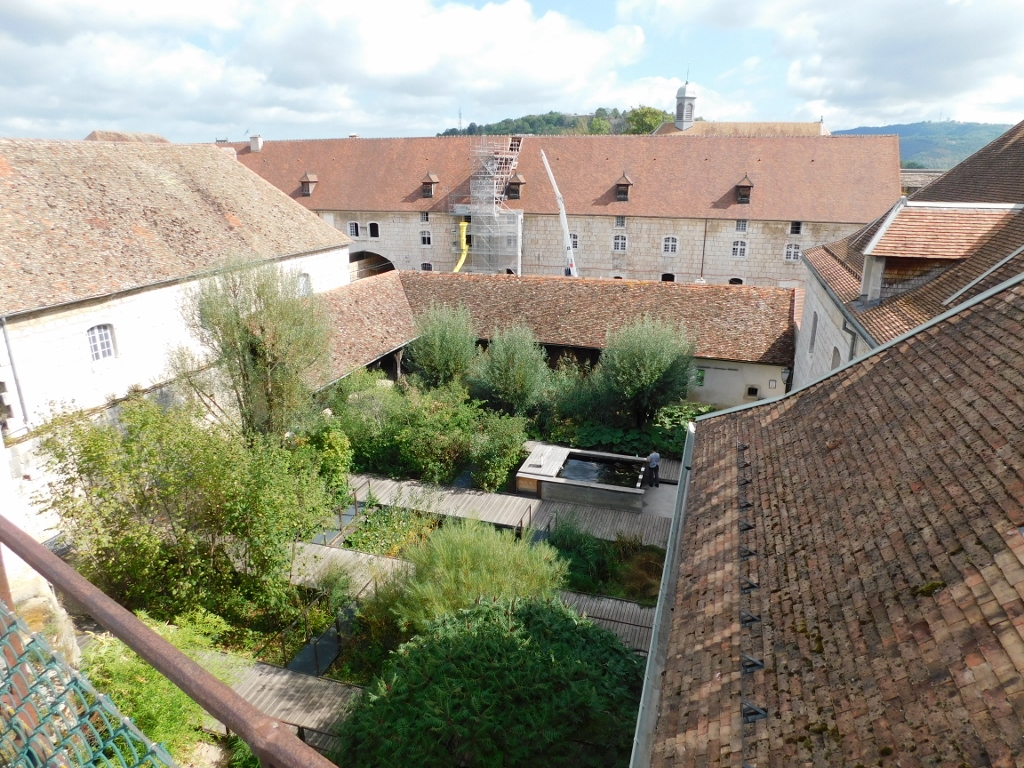 Vauban’s Citadel
Vauban’s Citadel
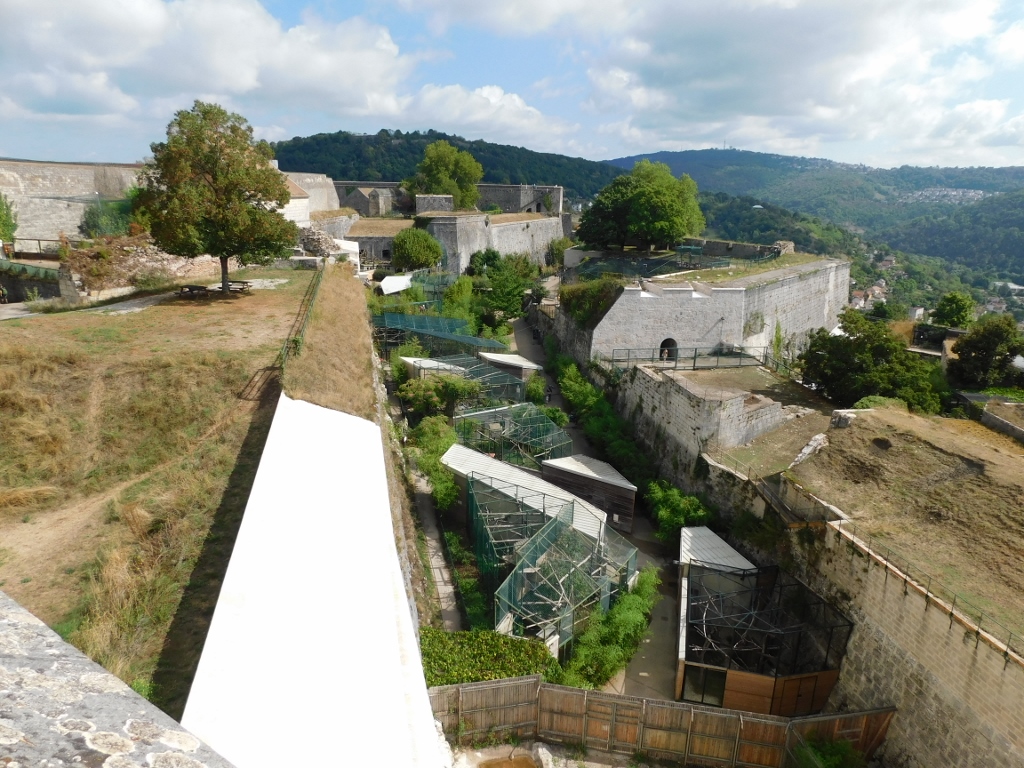 Vauban’s Citadel
Vauban’s Citadel
While walking a little up, a little down, I could also look at some animals, simply because I was passing close to them.
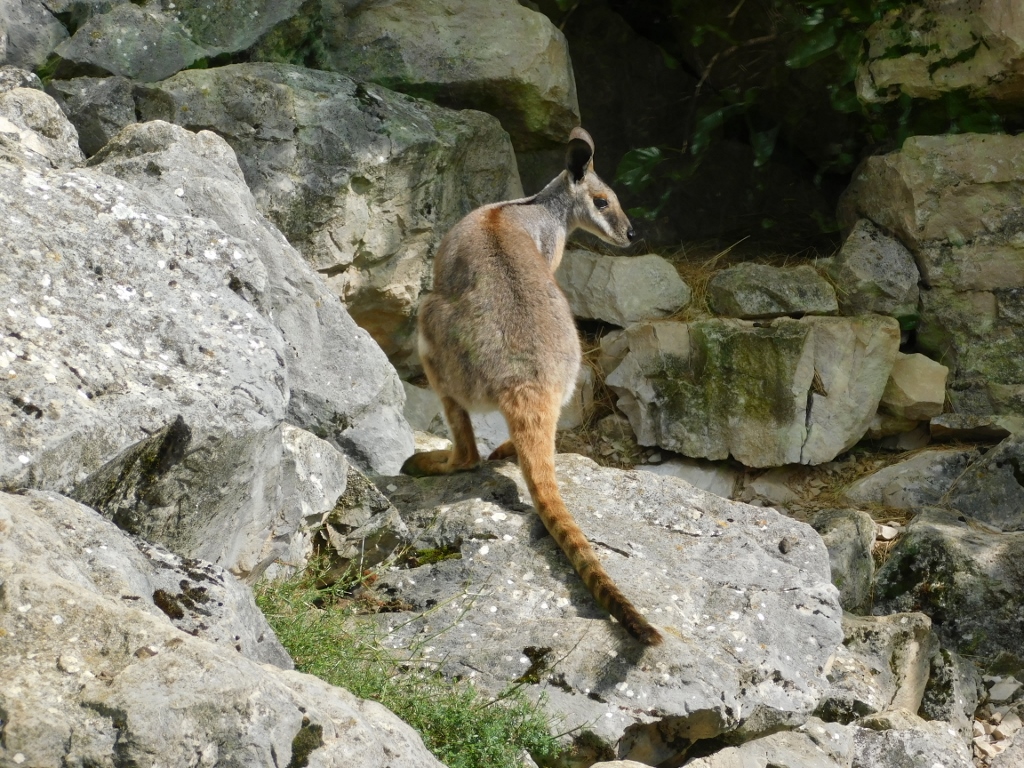 Wallaby (Petrogale xanthopus)
Wallaby (Petrogale xanthopus)
 A part of the Aquarium exhibit
A part of the Aquarium exhibit
But, this was a military fortification after all, which used to need some other important elements and not animals from Australia and colourful fish. For instance, a chapel and a well.
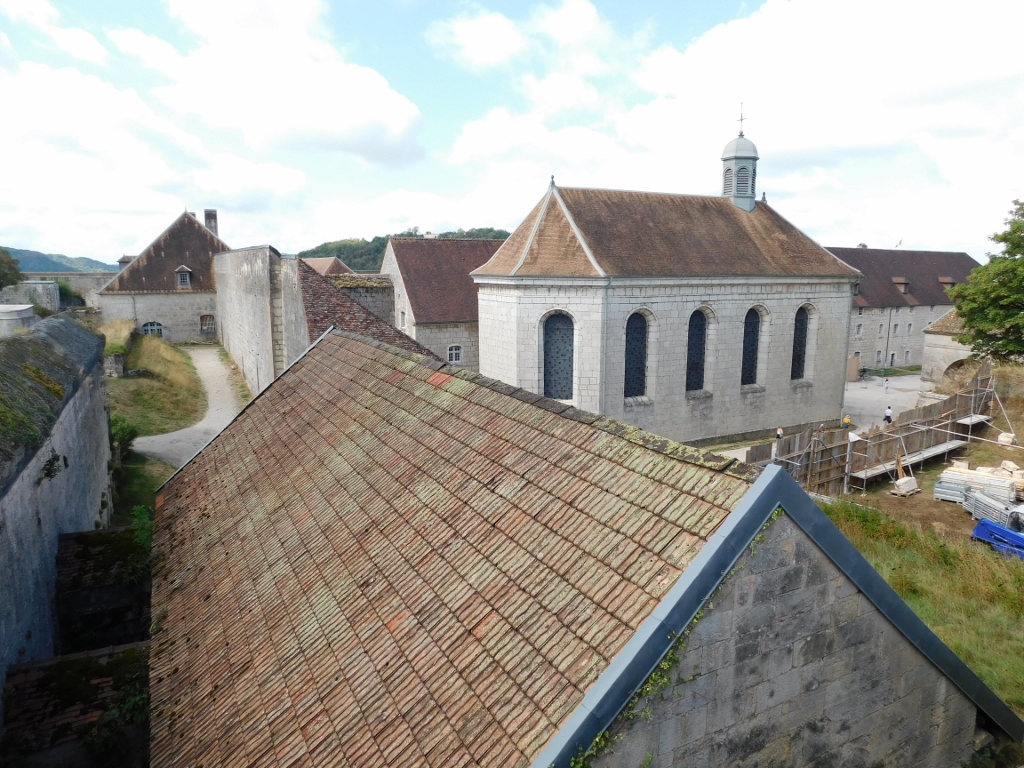 Vauban’s Citadel – among other things there is a chapel, too
Vauban’s Citadel – among other things there is a chapel, too
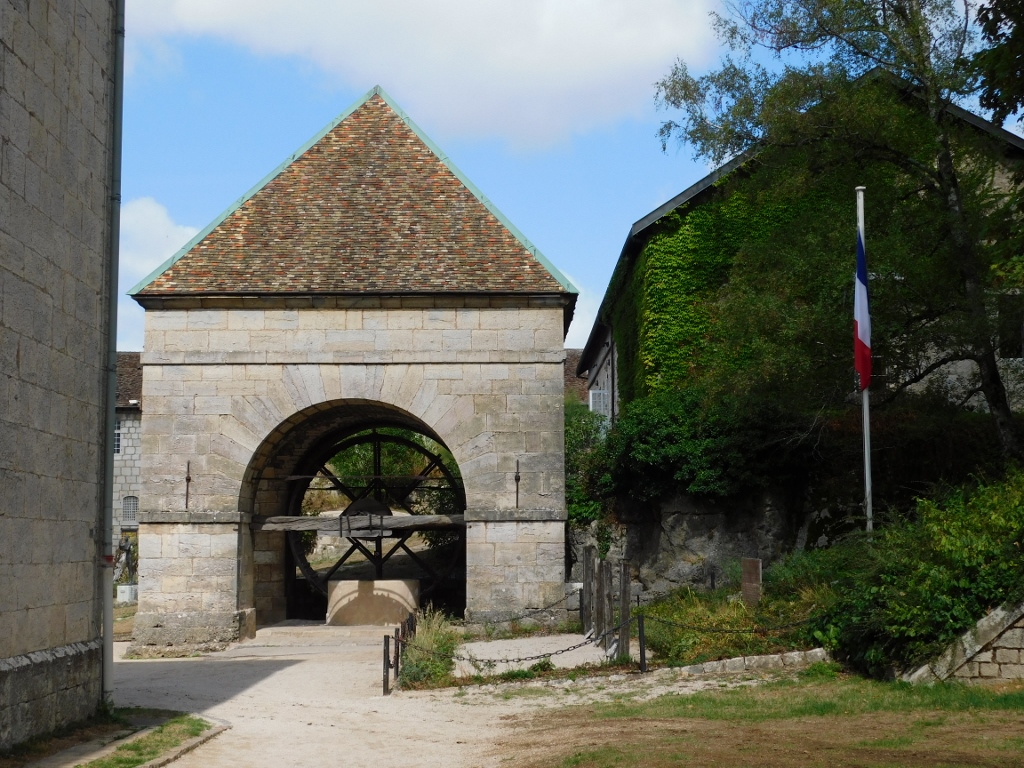 Vauban’s Citadel – a well
Vauban’s Citadel – a well
The chapel used to be dedicated to St. Stephen and it was consecrated in 1683. It no longer serves its former function, but rather inside one can see a film about Besançon and the Citadel.
As for the well, it was built between 1681 and 1683, and it was originally around 130 m deep. The water was not intended for drinking, but it was important that the fortress had ample supply of raw water.
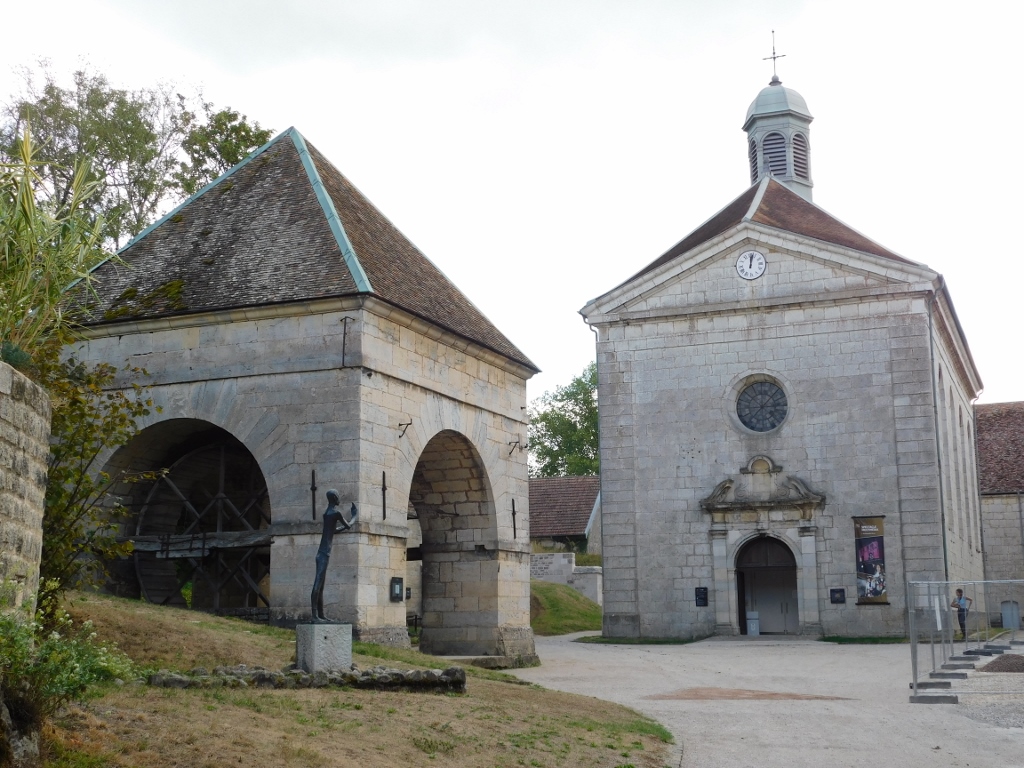 Vauban’s Citadel: the well is to the left and the church is to the right
Vauban’s Citadel: the well is to the left and the church is to the right
I walked around the citadel a little more taking photos and then I started to follow the same way while returning to the historical centre of Besançon.
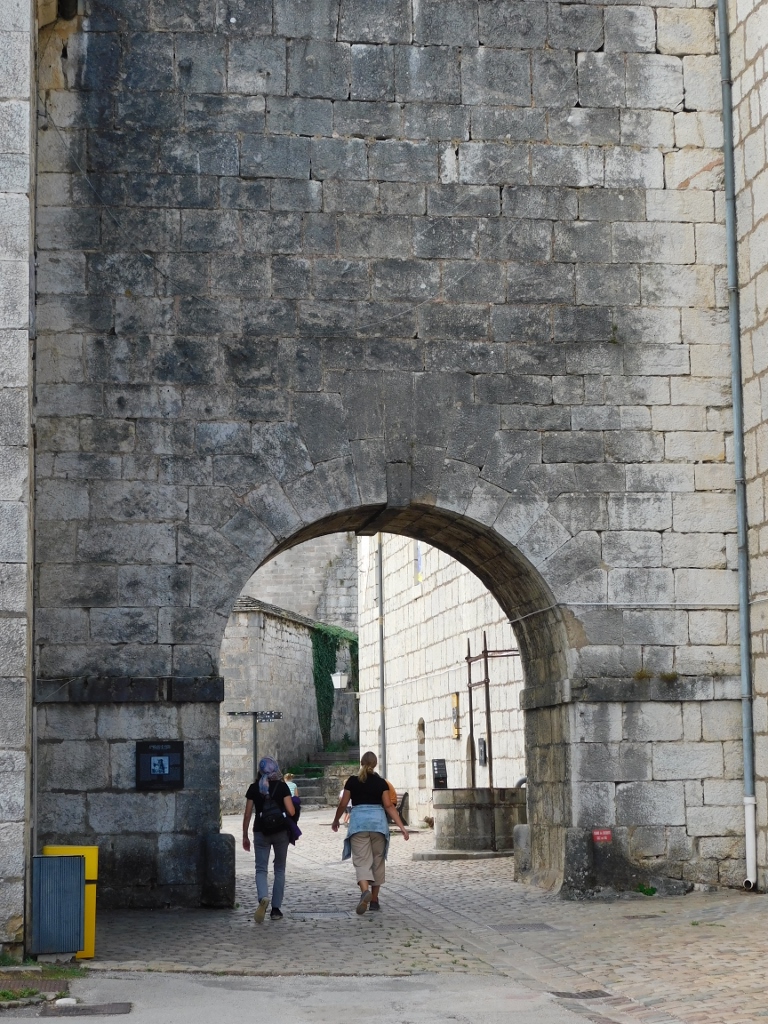 Vauban’s Citadel
Vauban’s Citadel
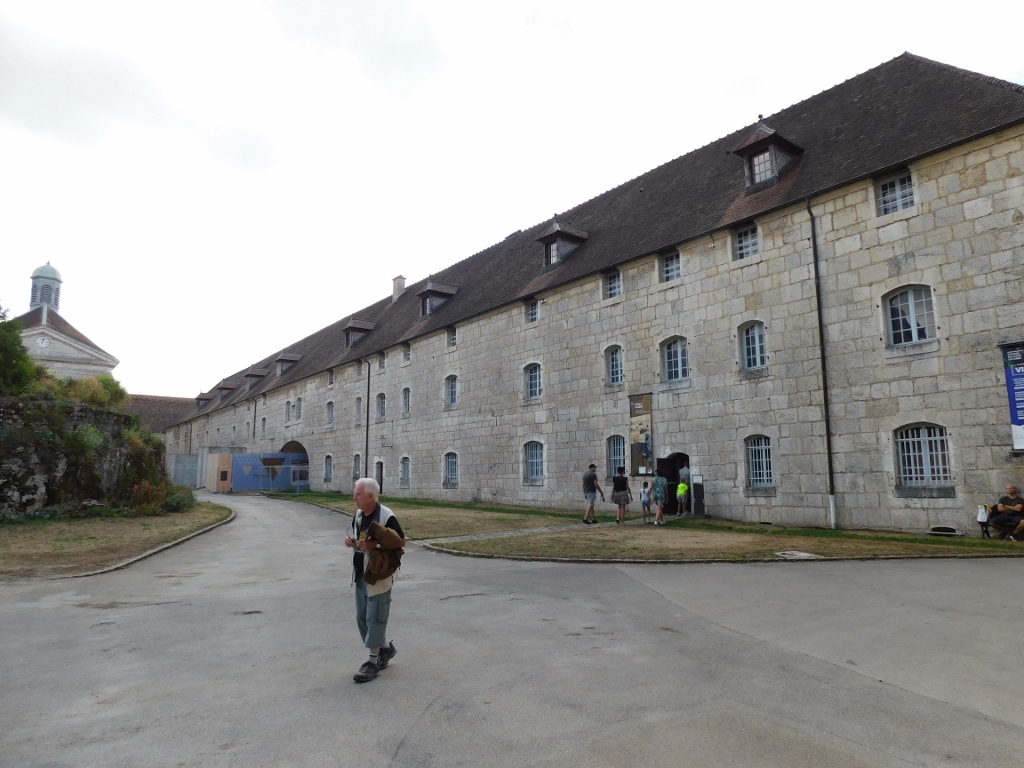 Vauban’s Citadel
Vauban’s Citadel
 Vauban’s Citadel
Vauban’s Citadel
 Vauban’s Citadel
Vauban’s Citadel
I reached the centre by the same route I followed on my way up, but now I looked at the city and its details in a more relaxed way, so I noted some buildings that I had previously missed. For instance, Hôtel Boistouset which is not a hotel in a contemporary meaning of the word, but a palace that was built around the middle of the 18th century and which is nowadays used as a private residence that belongs to the diocese.
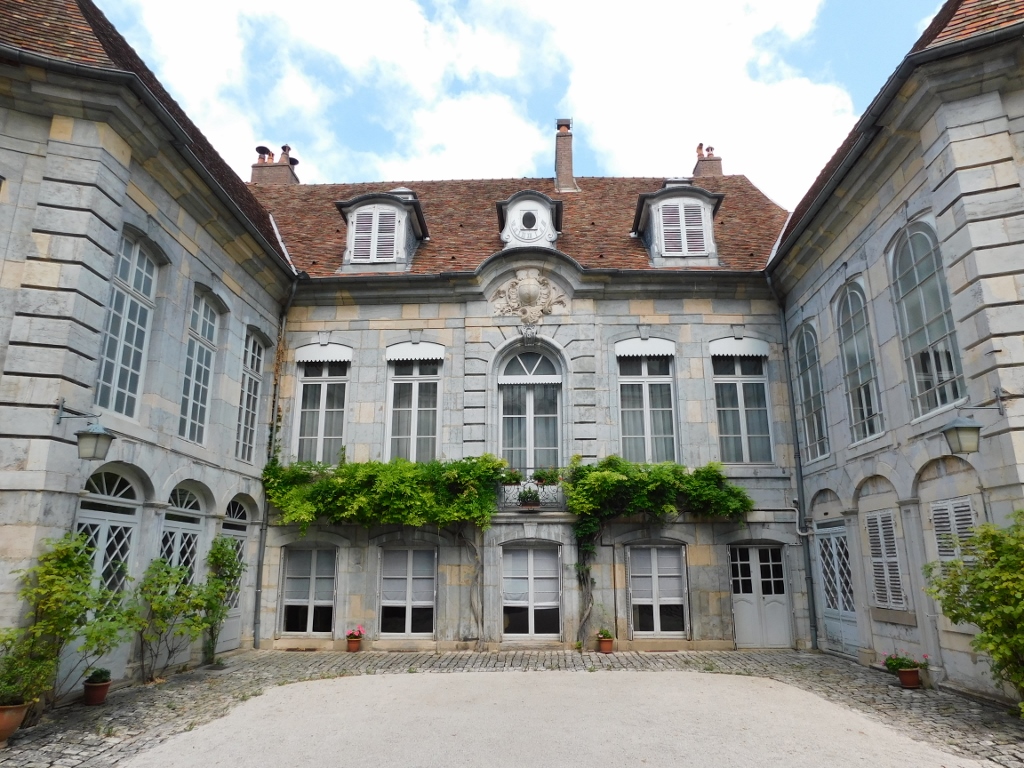 Hôtel Boistouset
Hôtel Boistouset
I still enjoyed the interesting buildings and chimneys of Besançon and then I walked past a former church from the 15th century that was already during the Revolution, at the end of the 18th century, sold and is nowadays evidently no longer used as a religious building.
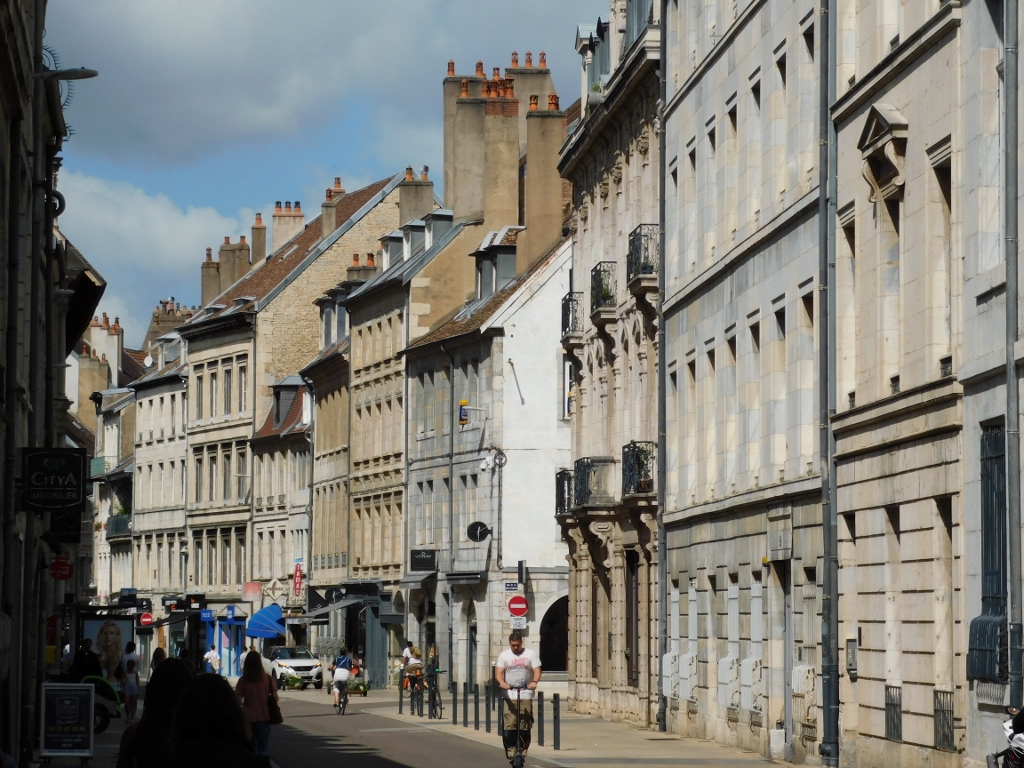 Besançon
Besançon
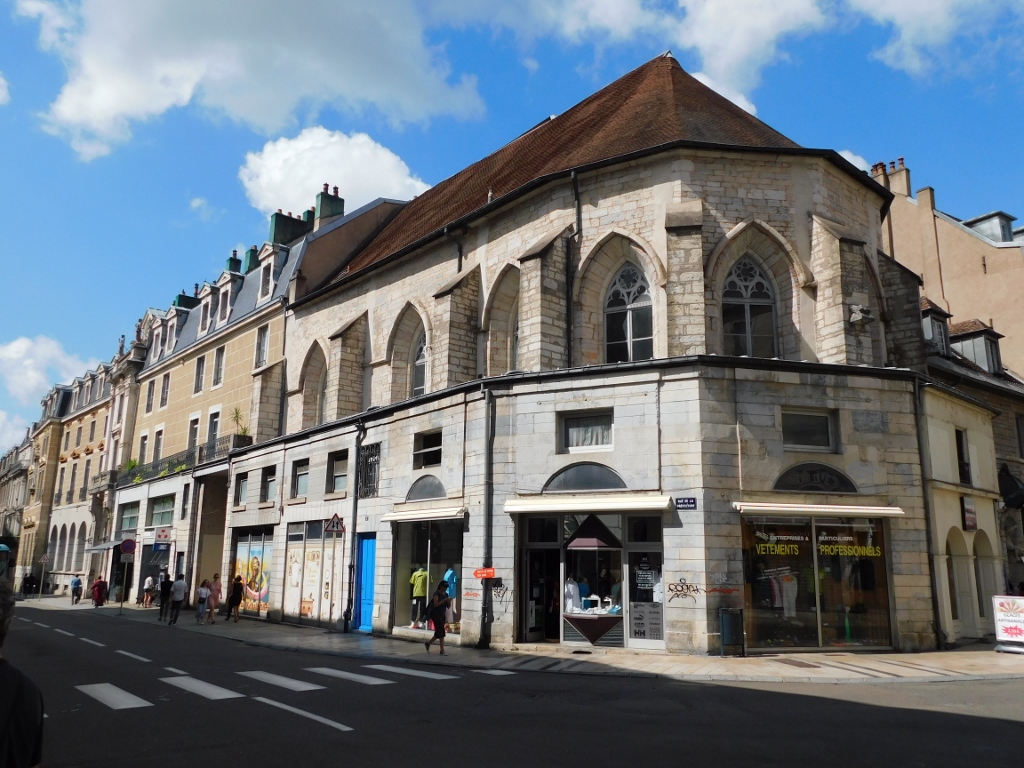 Former church
Former church
When I got to the Doubs, I decided to follow a different route towards the railway station. To start with, I crossed the river and walked past the Church of St. Mary Magdalene (Église de la Madeleine) that was built around the middle of the 18th century.
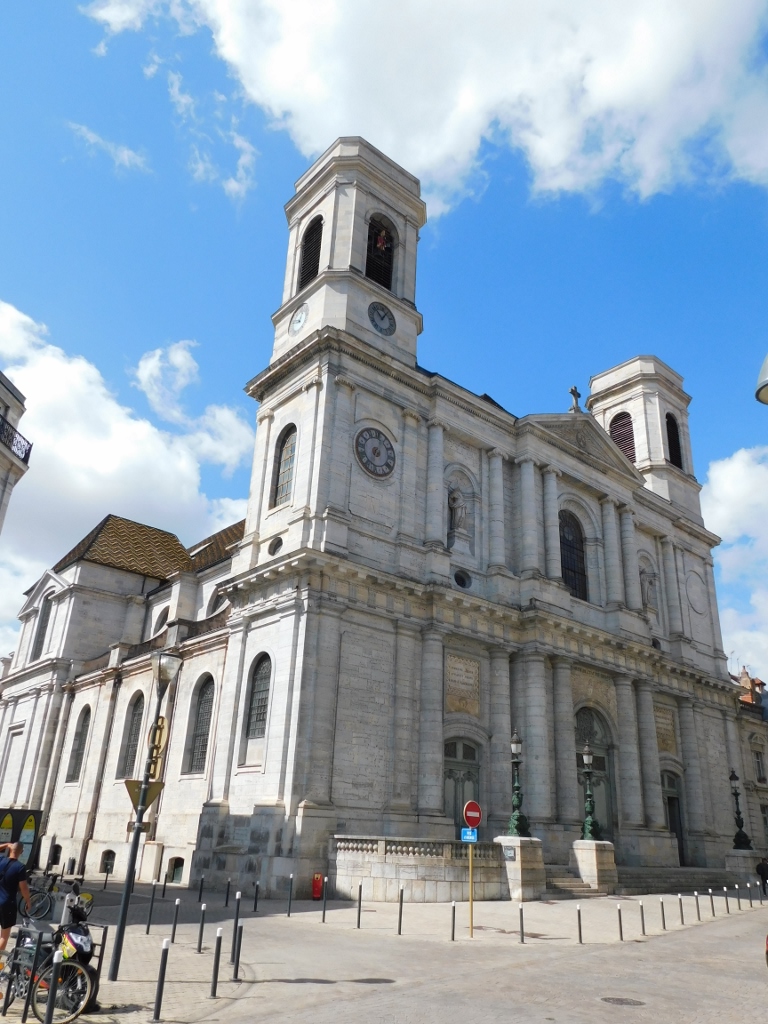 Church of St. Mary Magdalene
Church of St. Mary Magdalene
And then I continued along a street that leads through one of the oldest quarters of Besançon –Battant that has been under architectural protection since 1964.
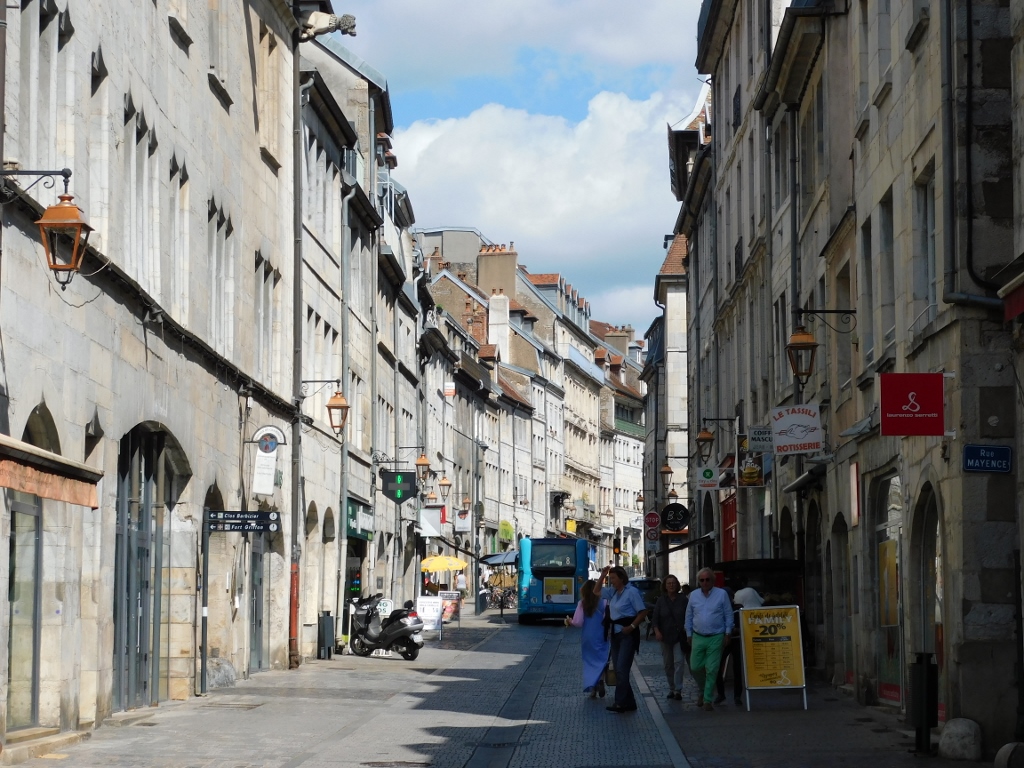 Main street in Battant quarter
Main street in Battant quarter
Soon I reached the park across the railway station and there I walked again along the Esplanade Jean Morin that celebrates the soldiers and fighters from the French armed forces and resistance movement who fought in the two world wars.
 Esplanade Jean Morin
Esplanade Jean Morin
As for my return to Mulhouse, I made two important decisions. The first one was to make a stop in the town of Belfort and the second was to take a local train to Belfort and not the super-fast TGV.
Both of these decisions were excellent, but the second one allowed me to enjoy in the very pretty landscapes through which this railway line goes.
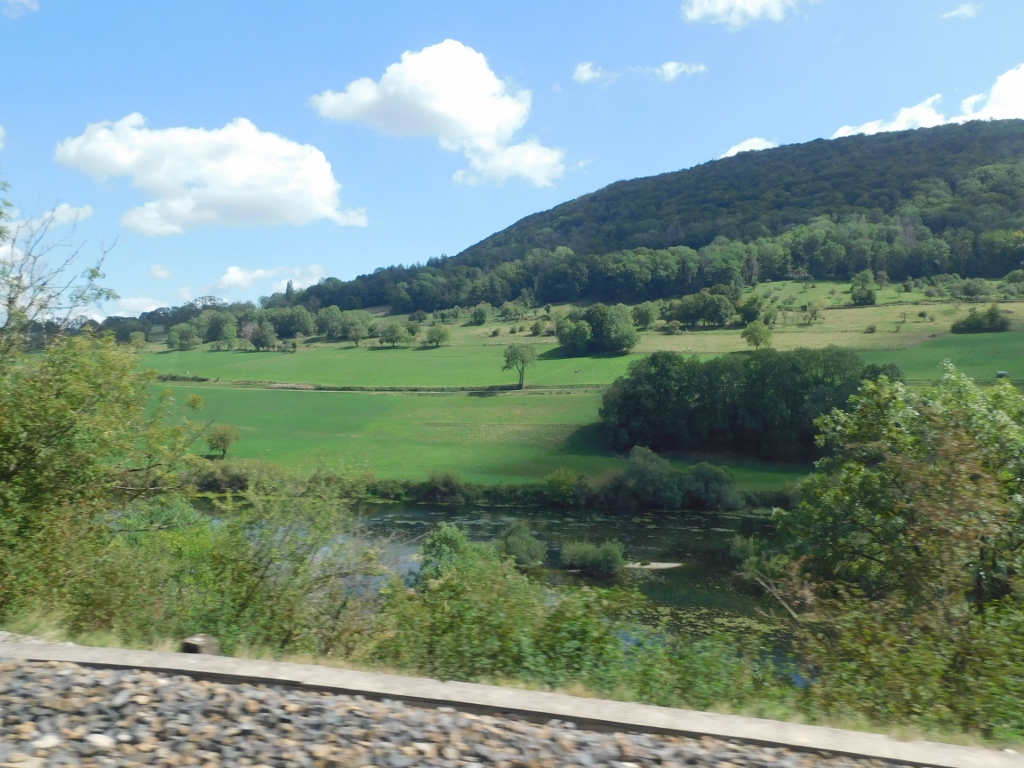 On the way from Besançon to Belfort
On the way from Besançon to Belfort
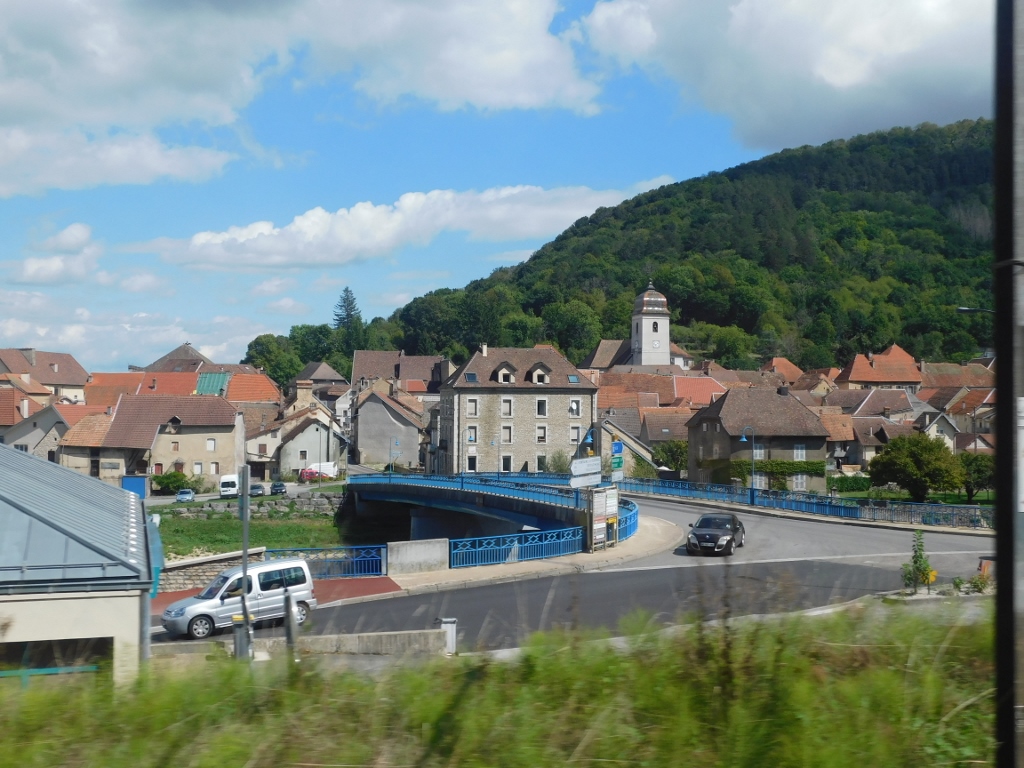 On the way from Besançon to Belfort
On the way from Besançon to Belfort